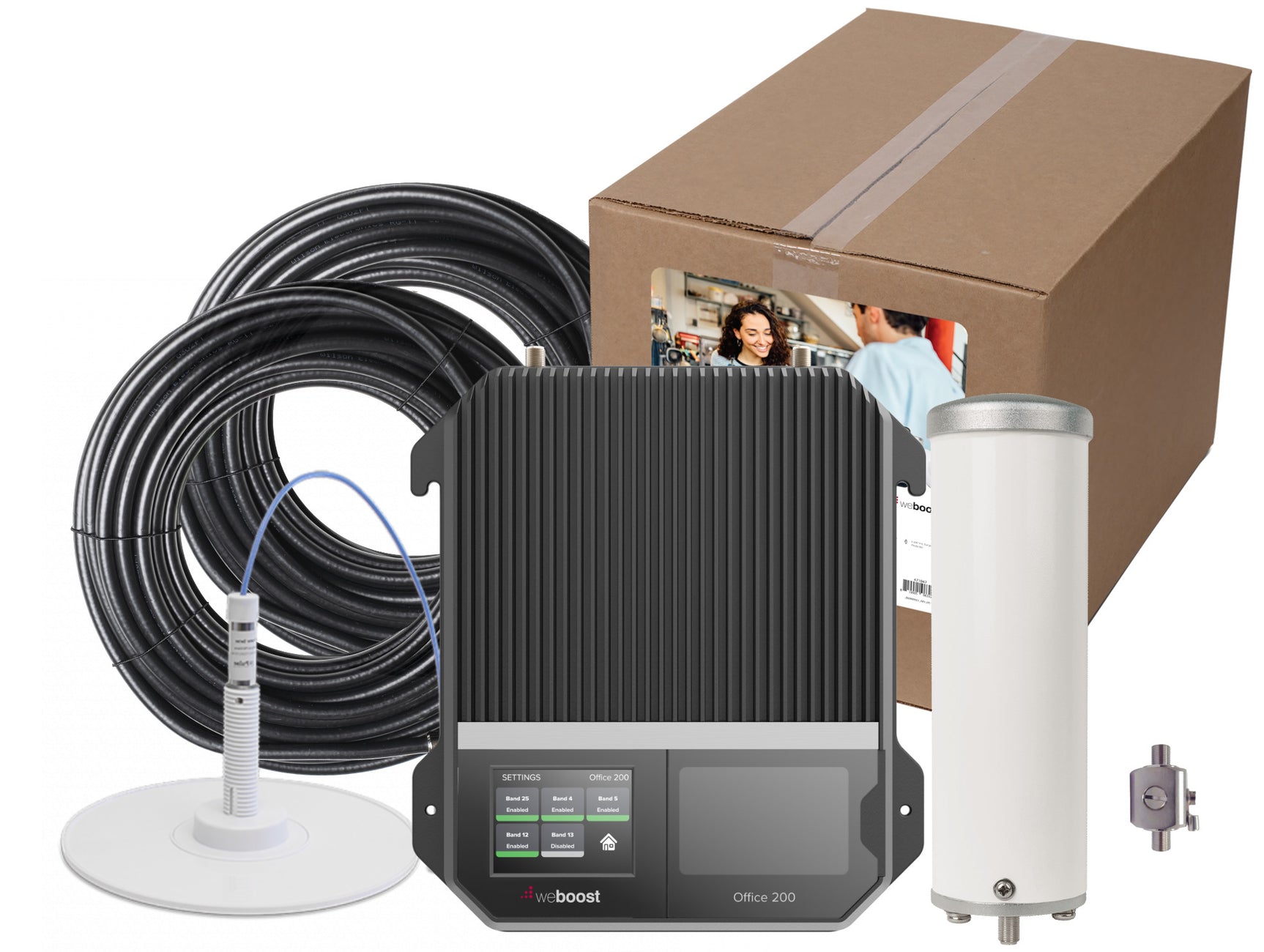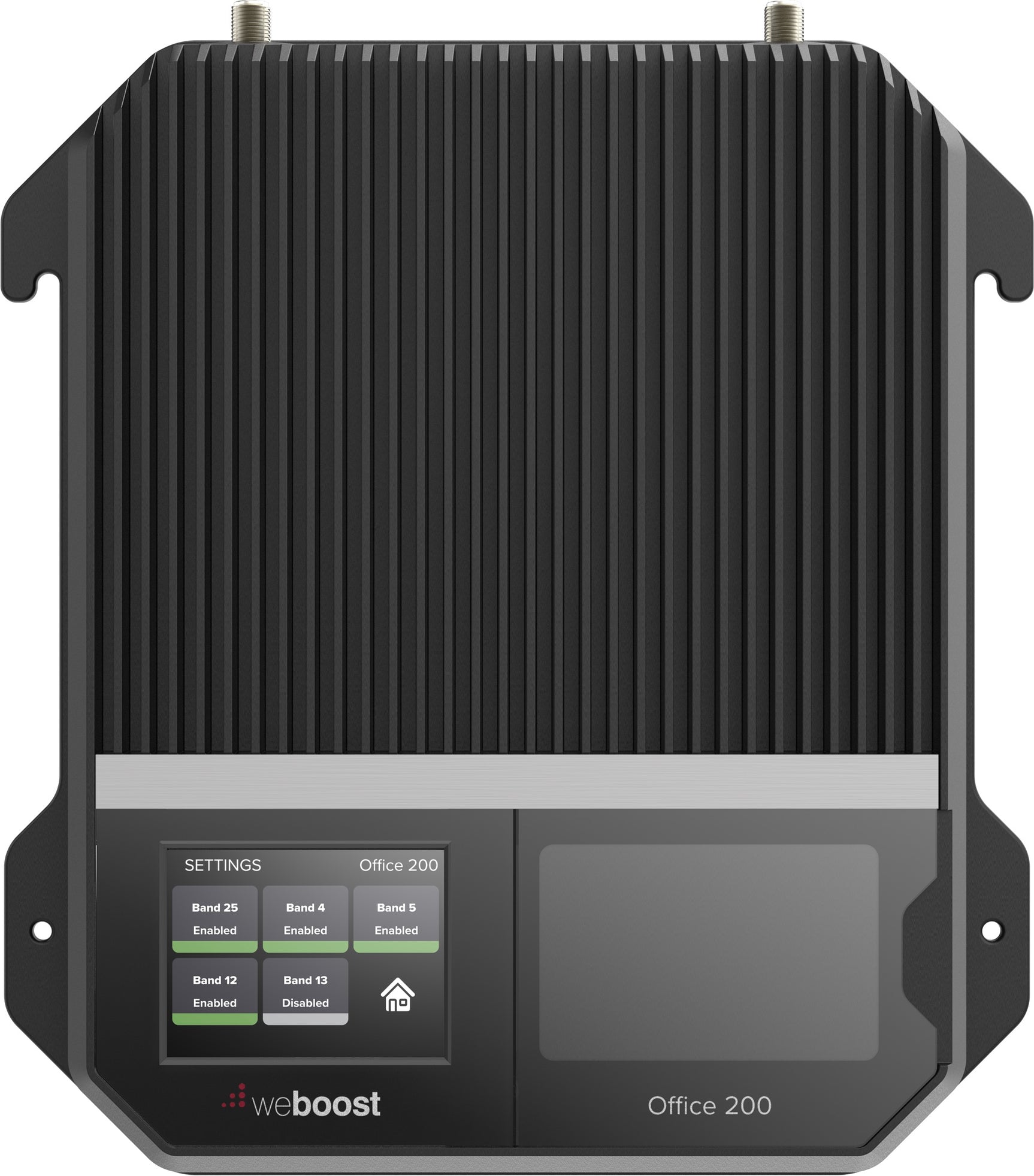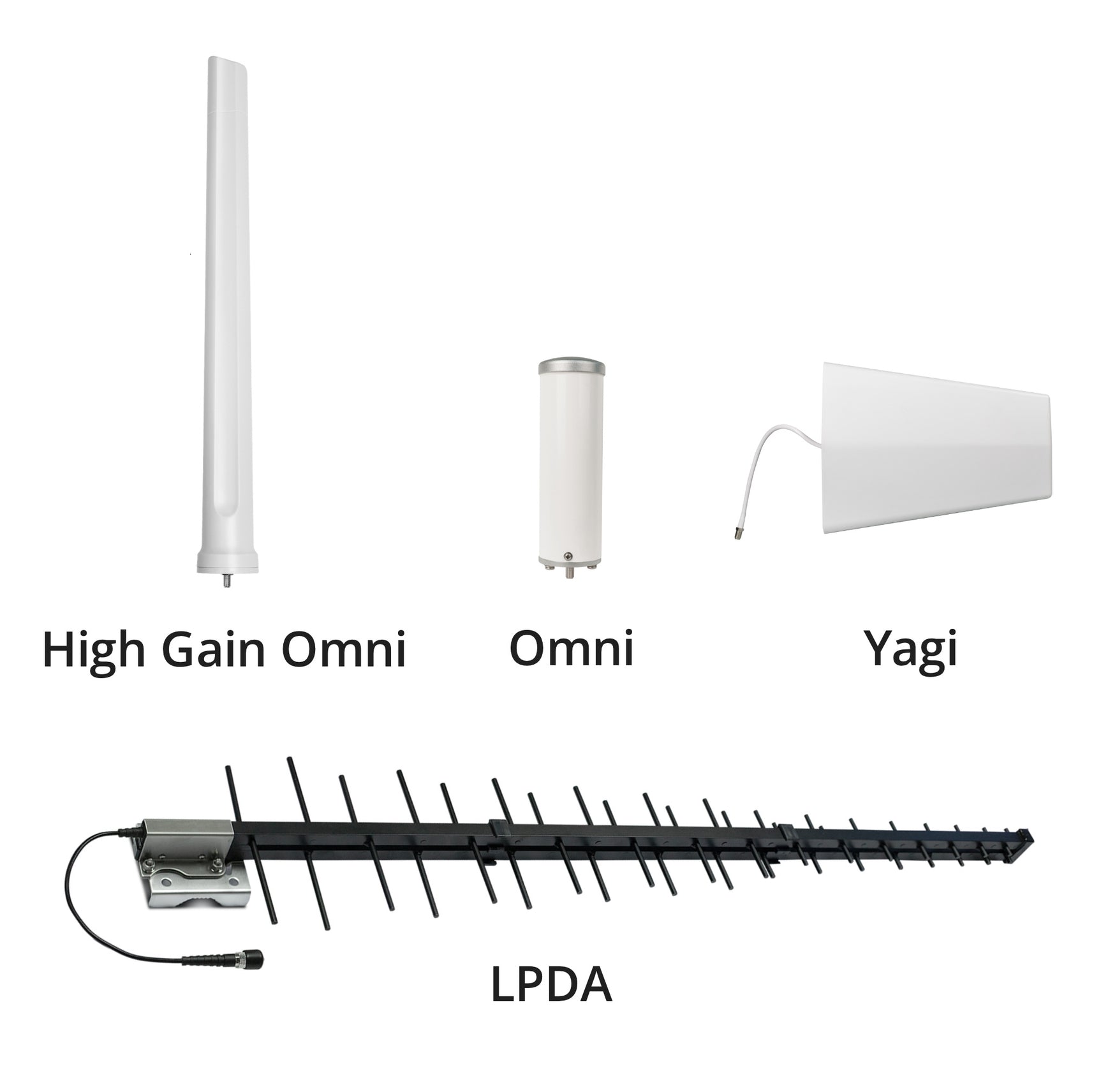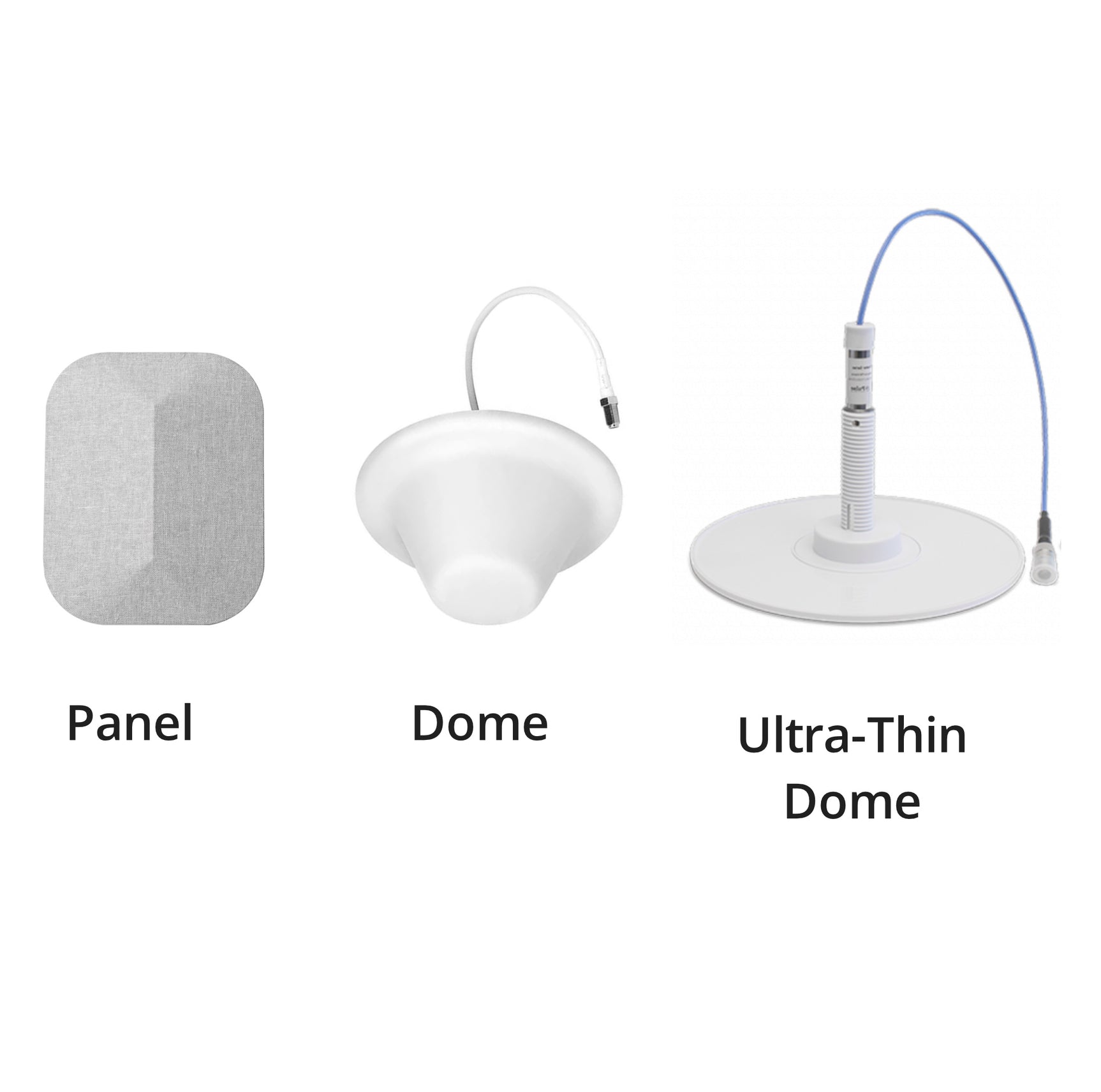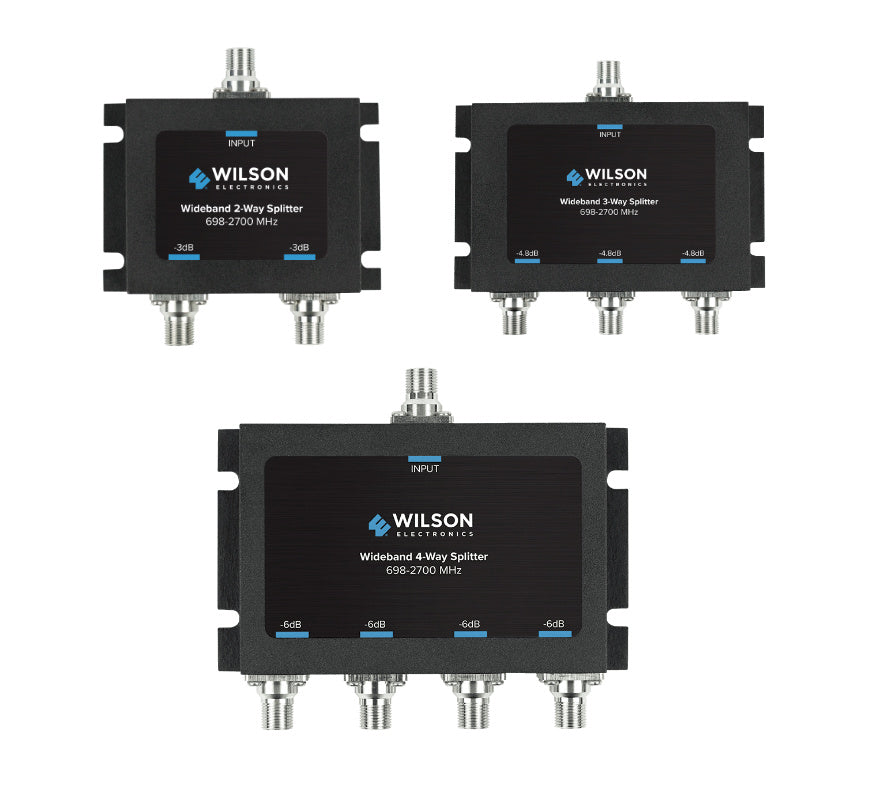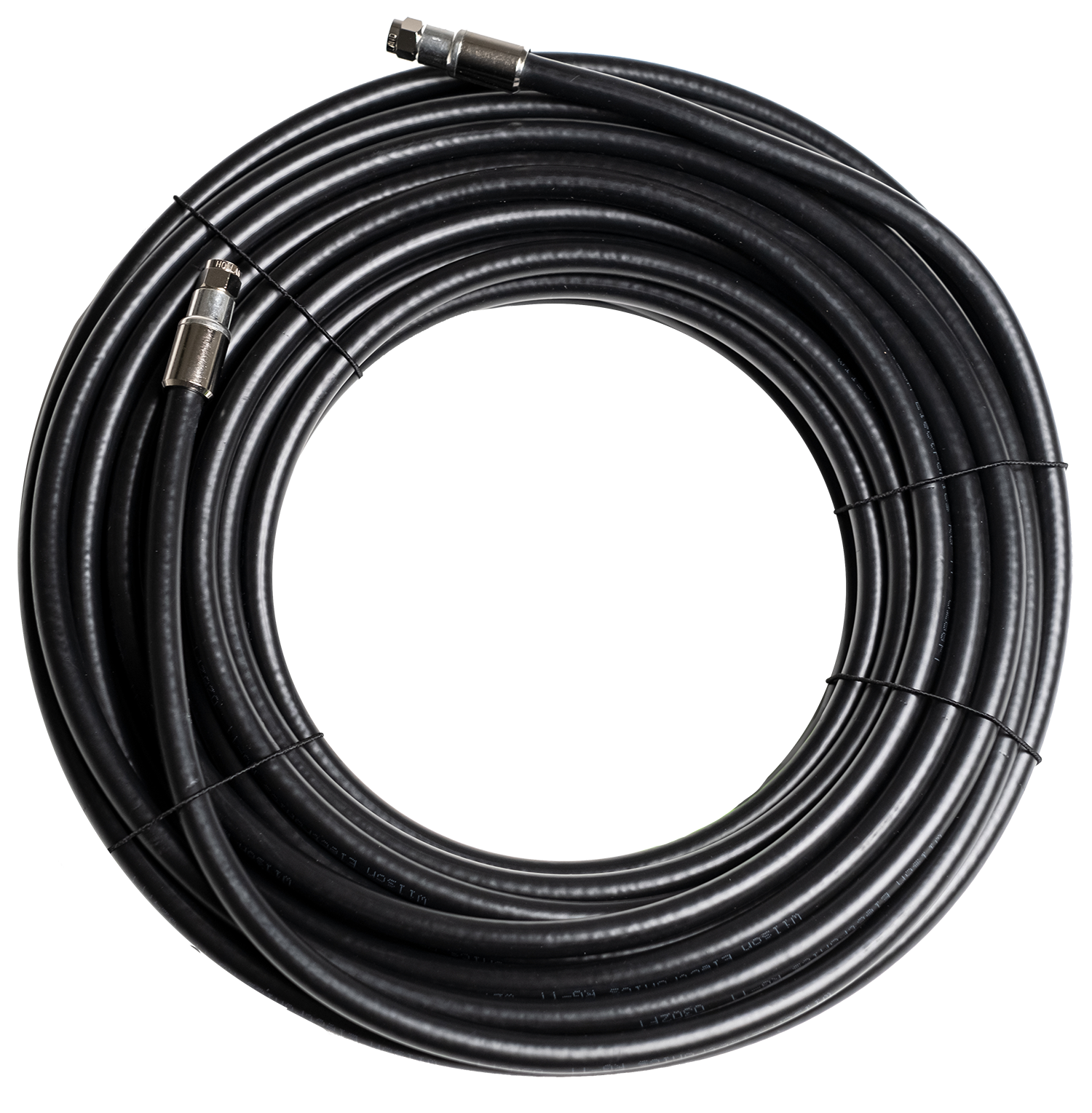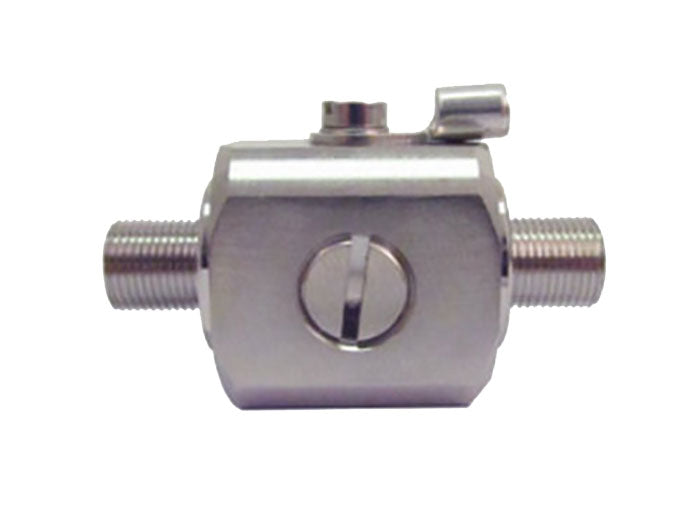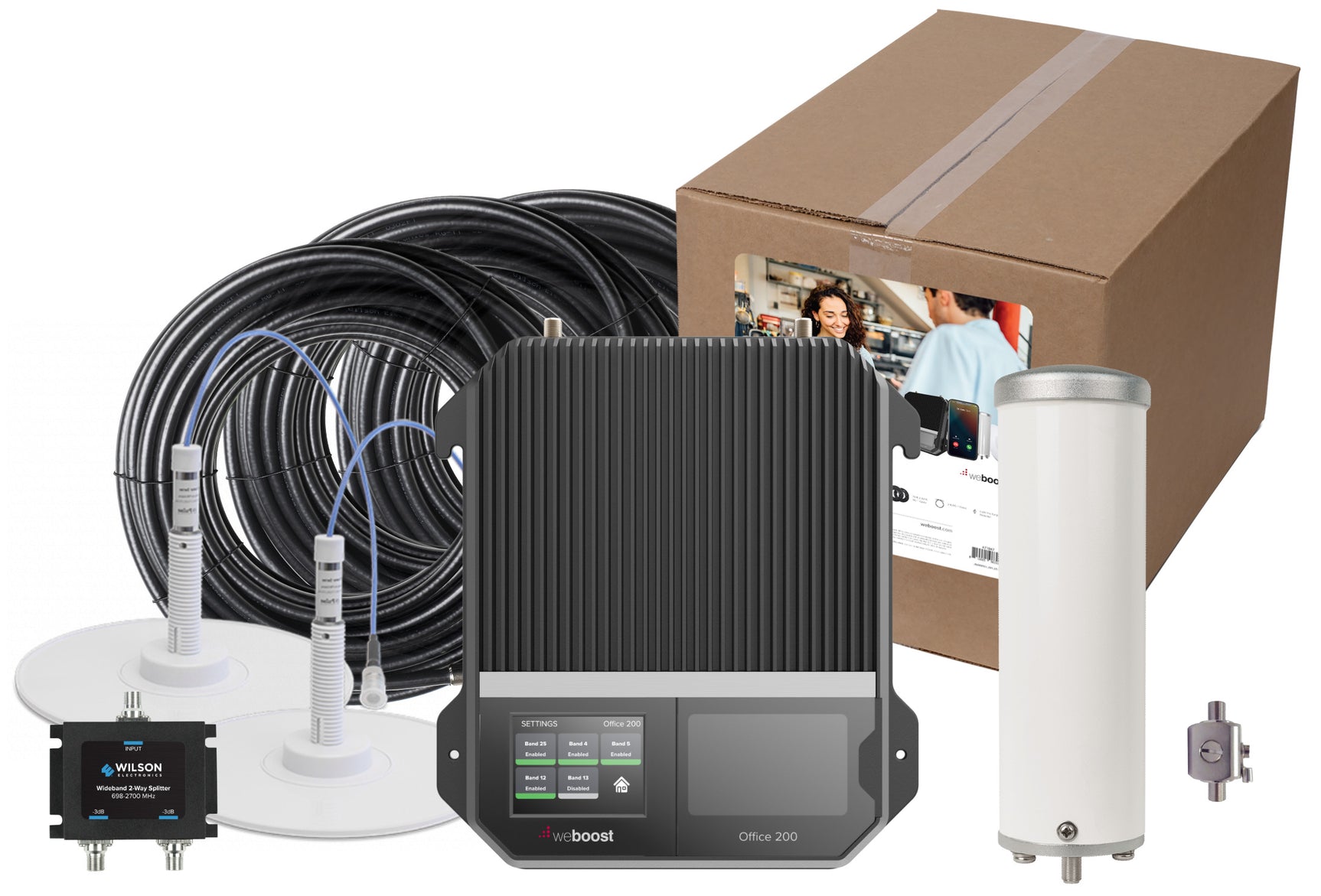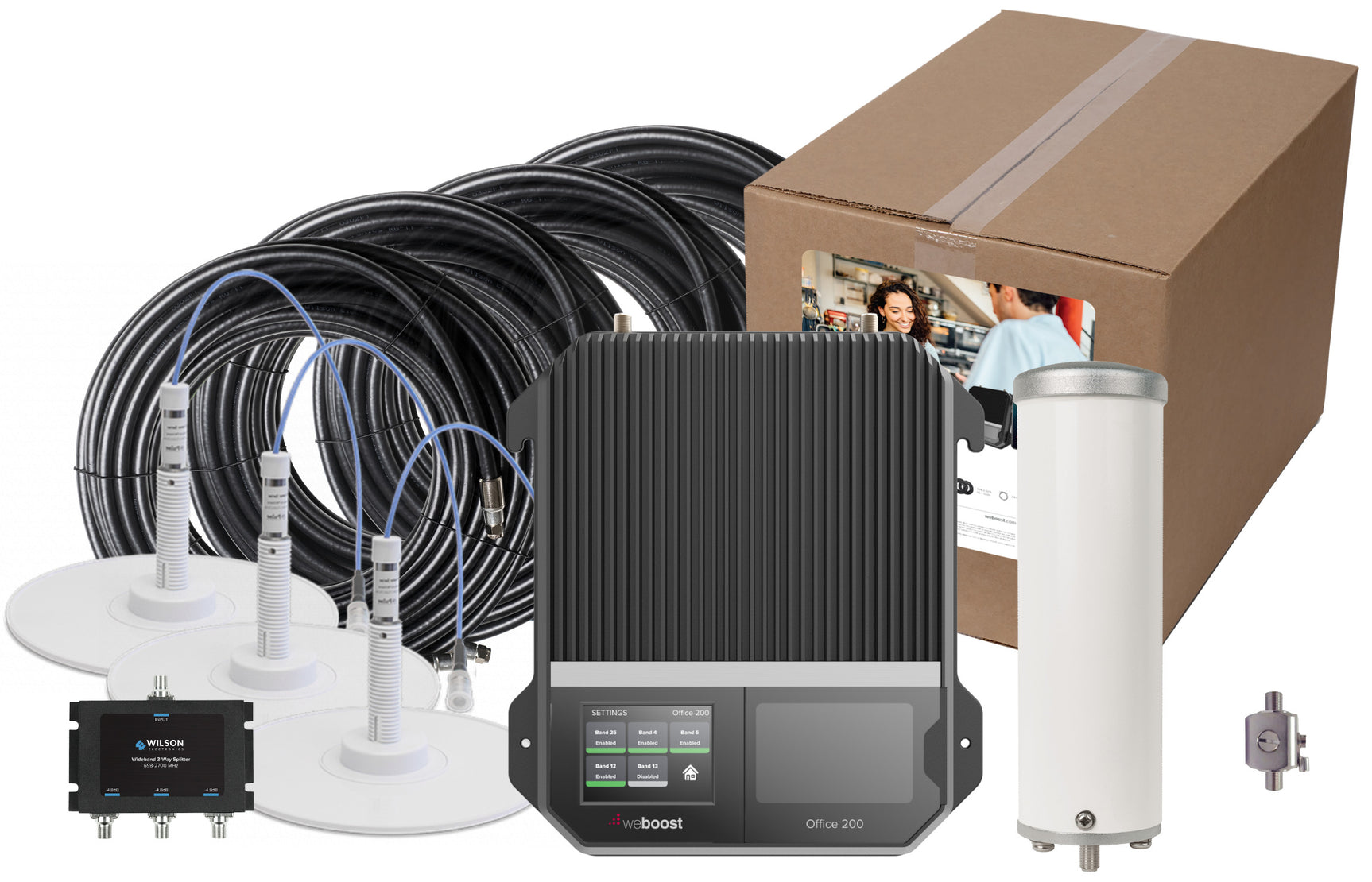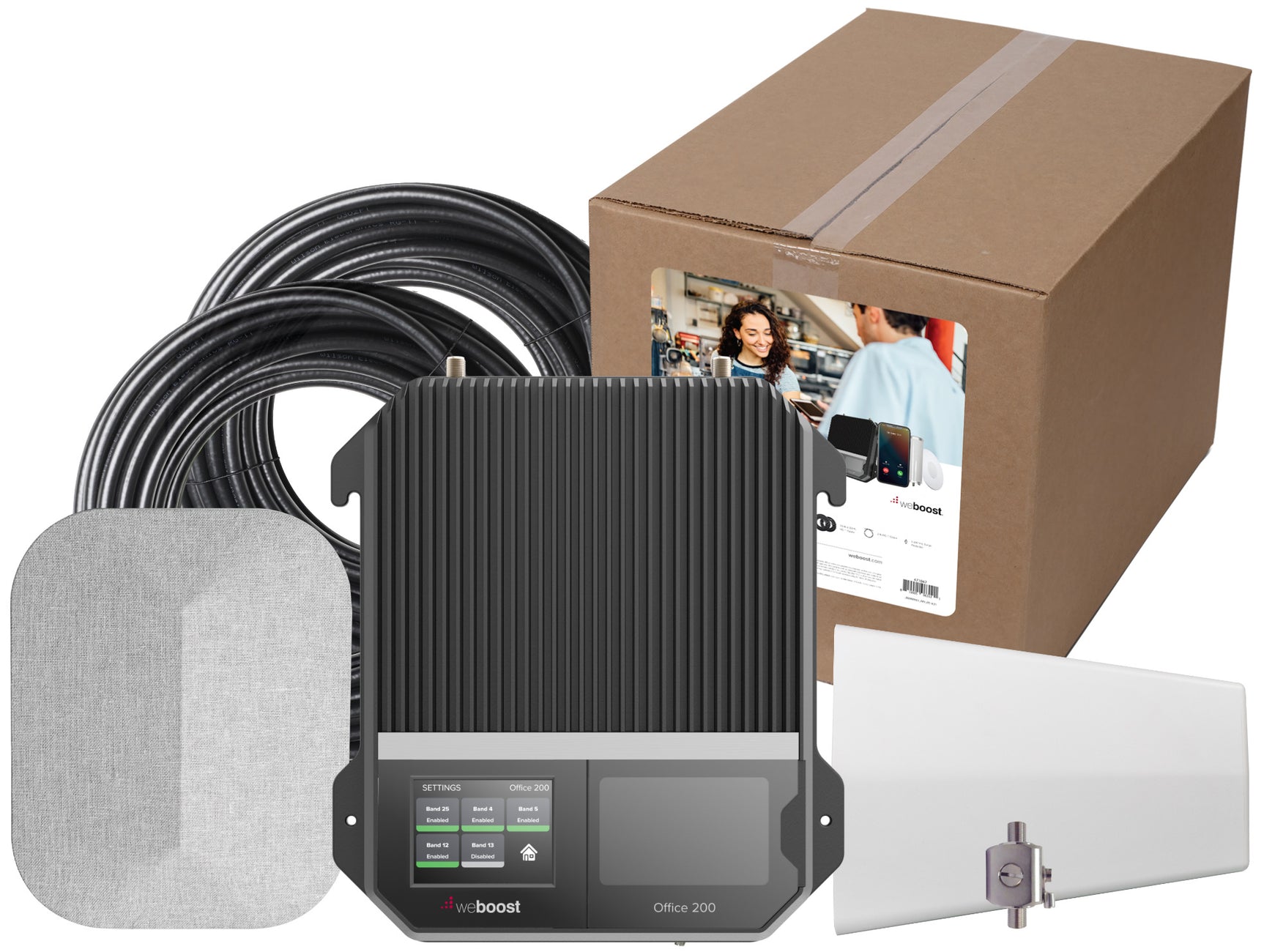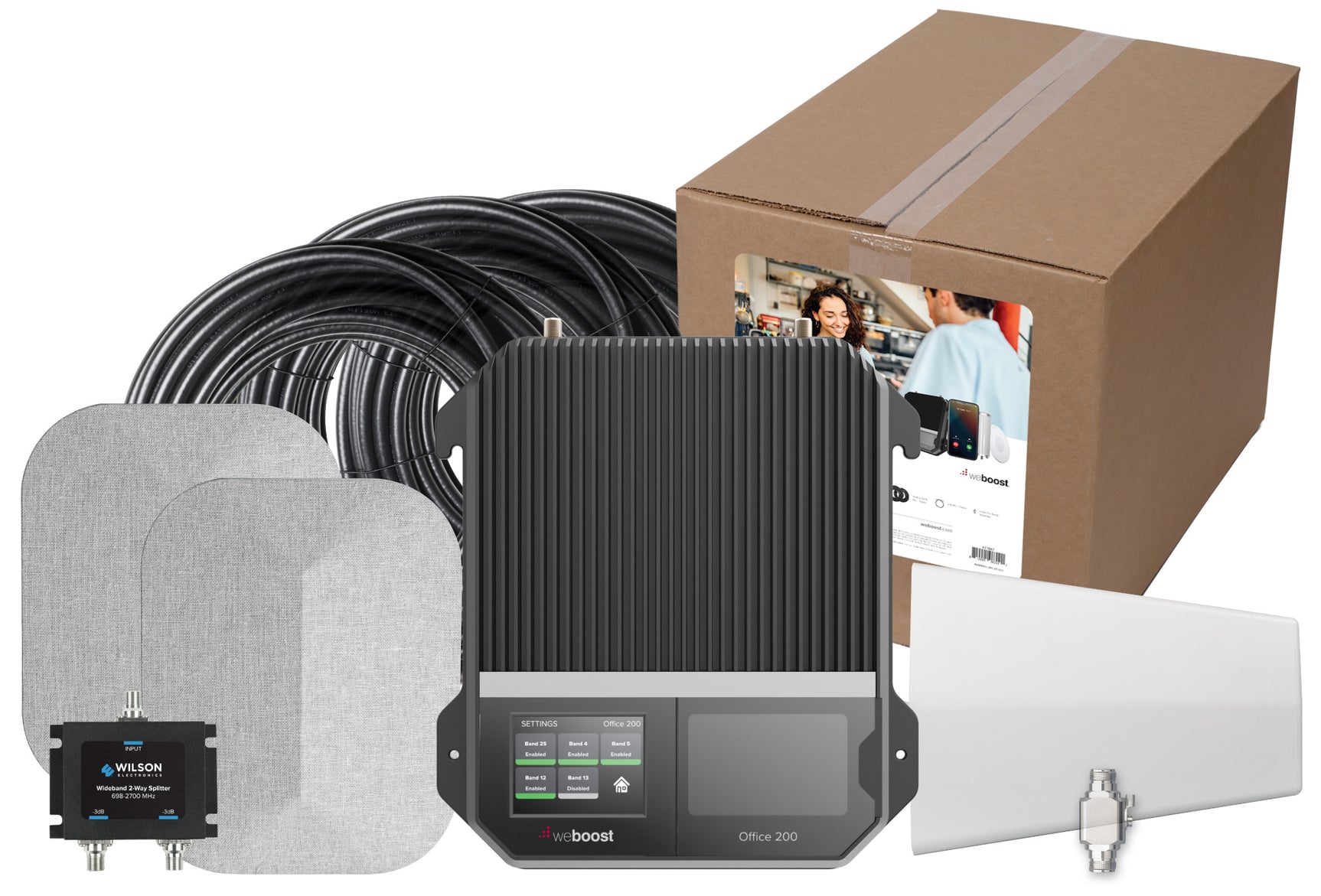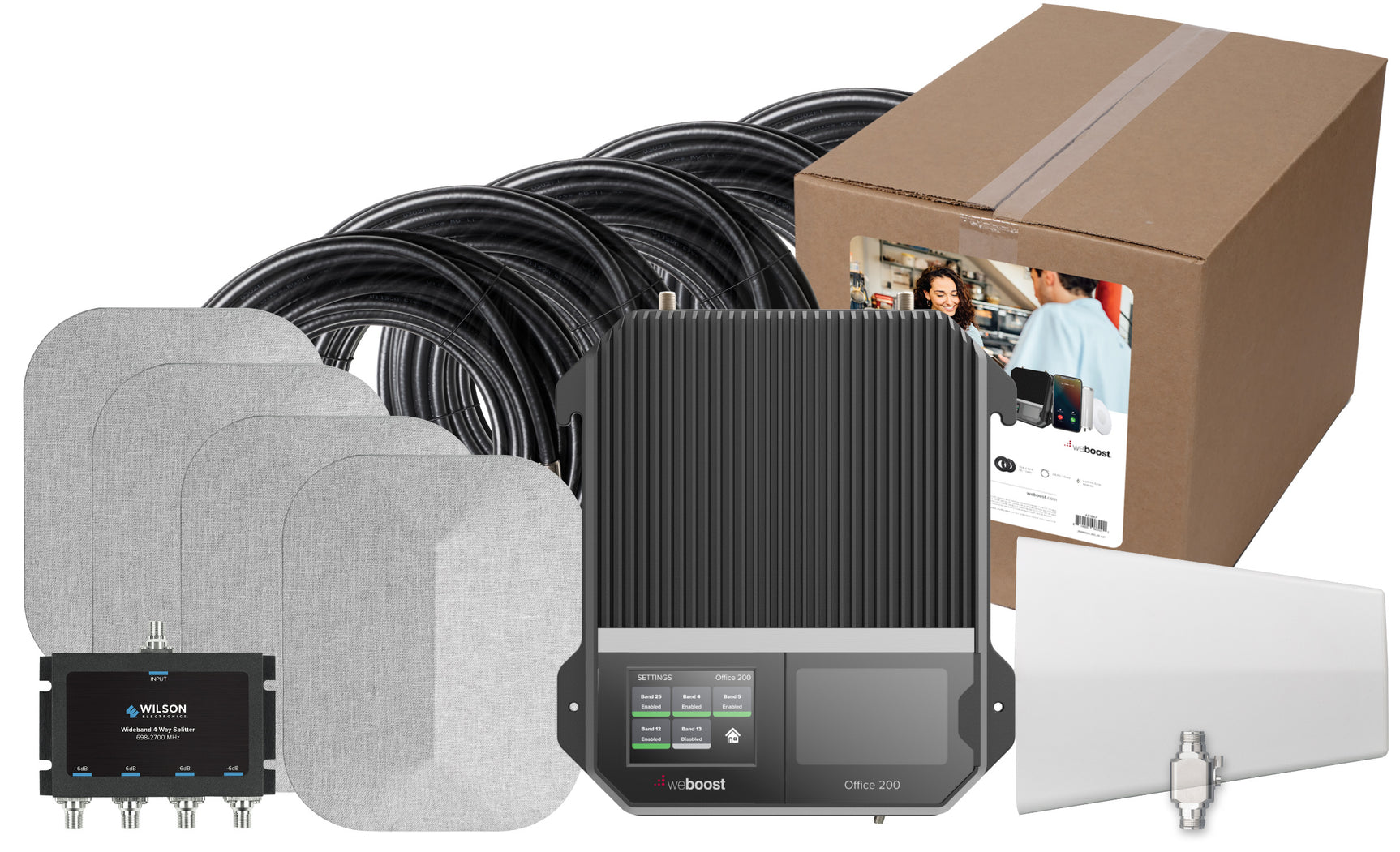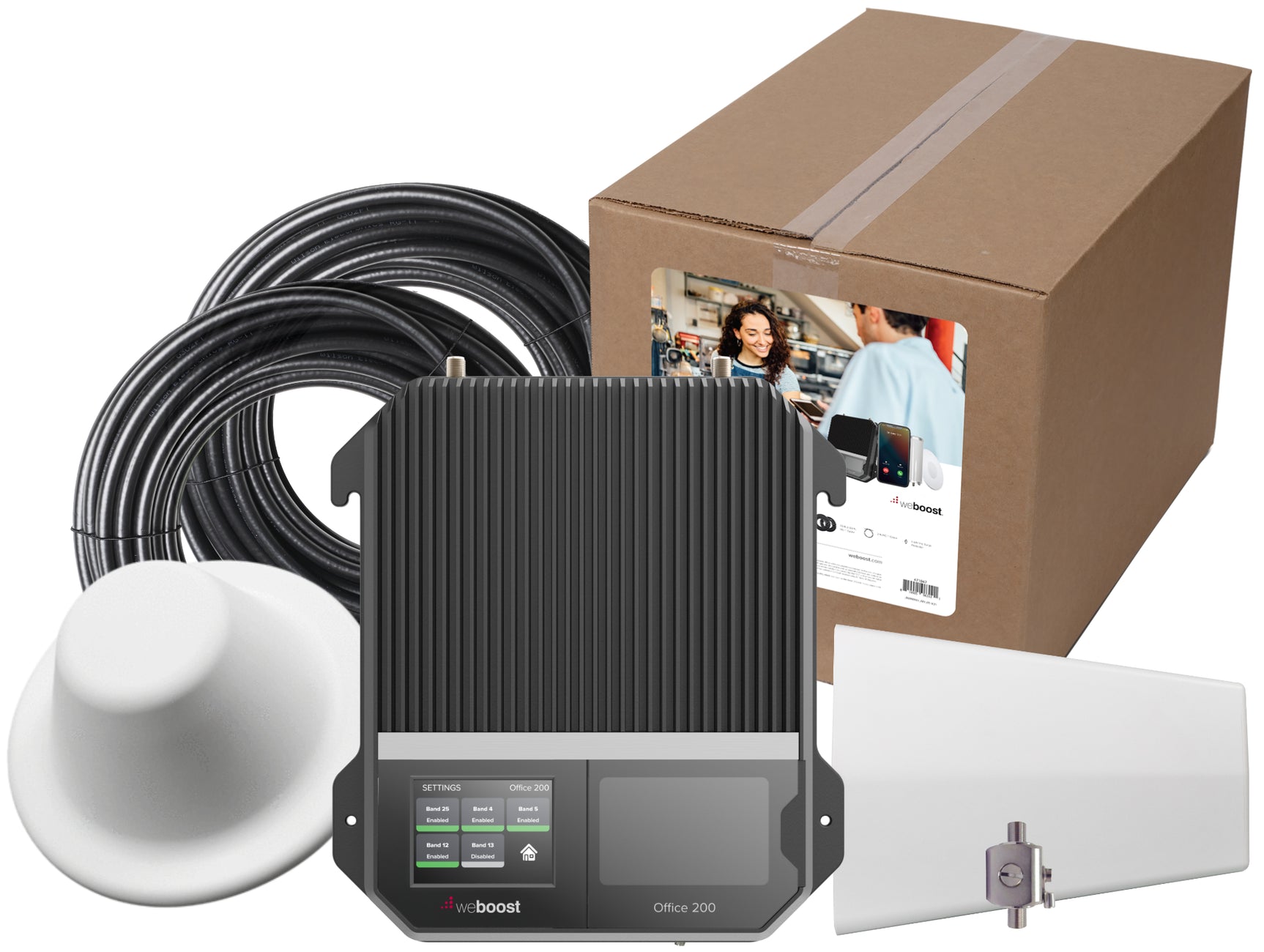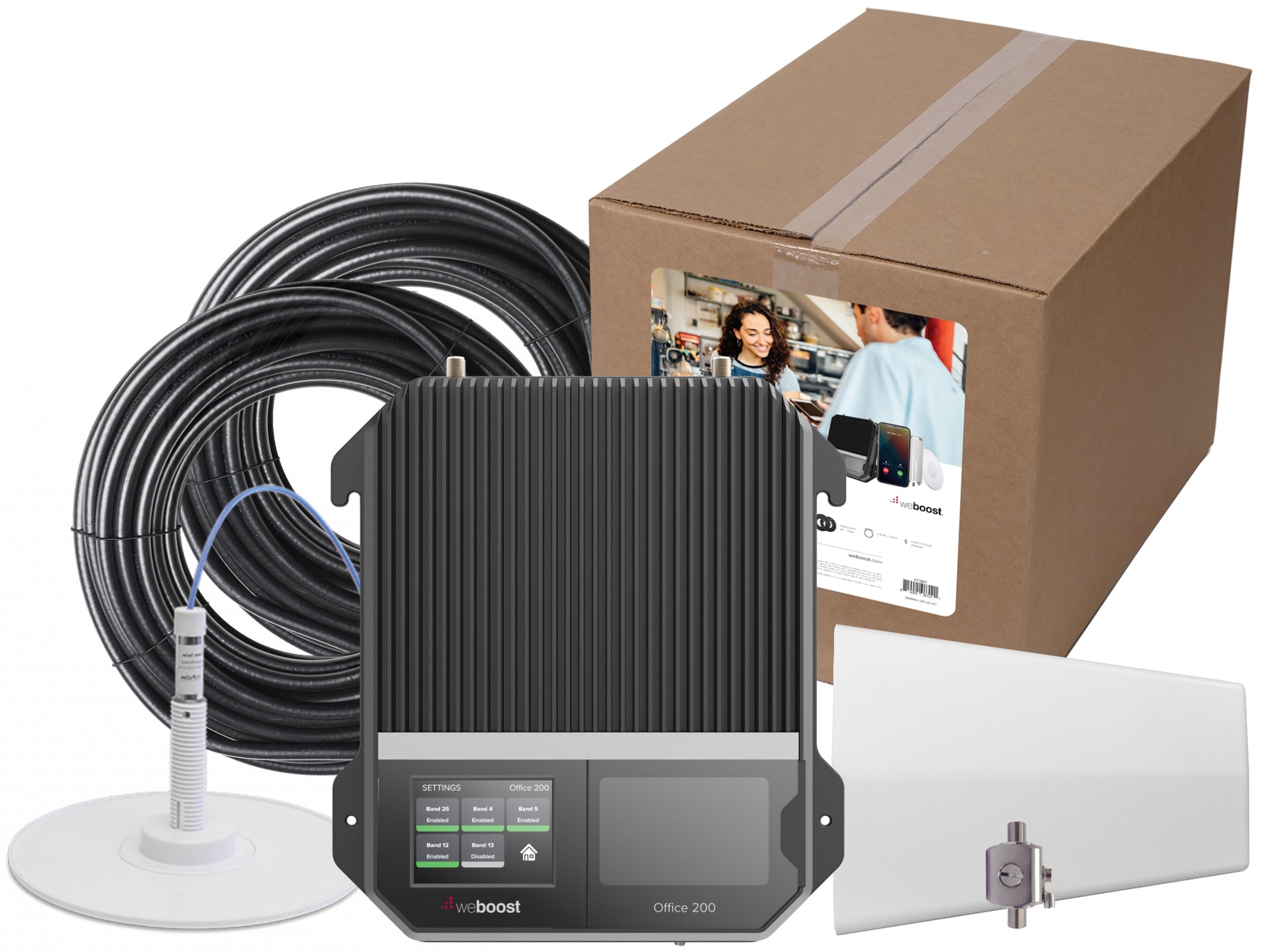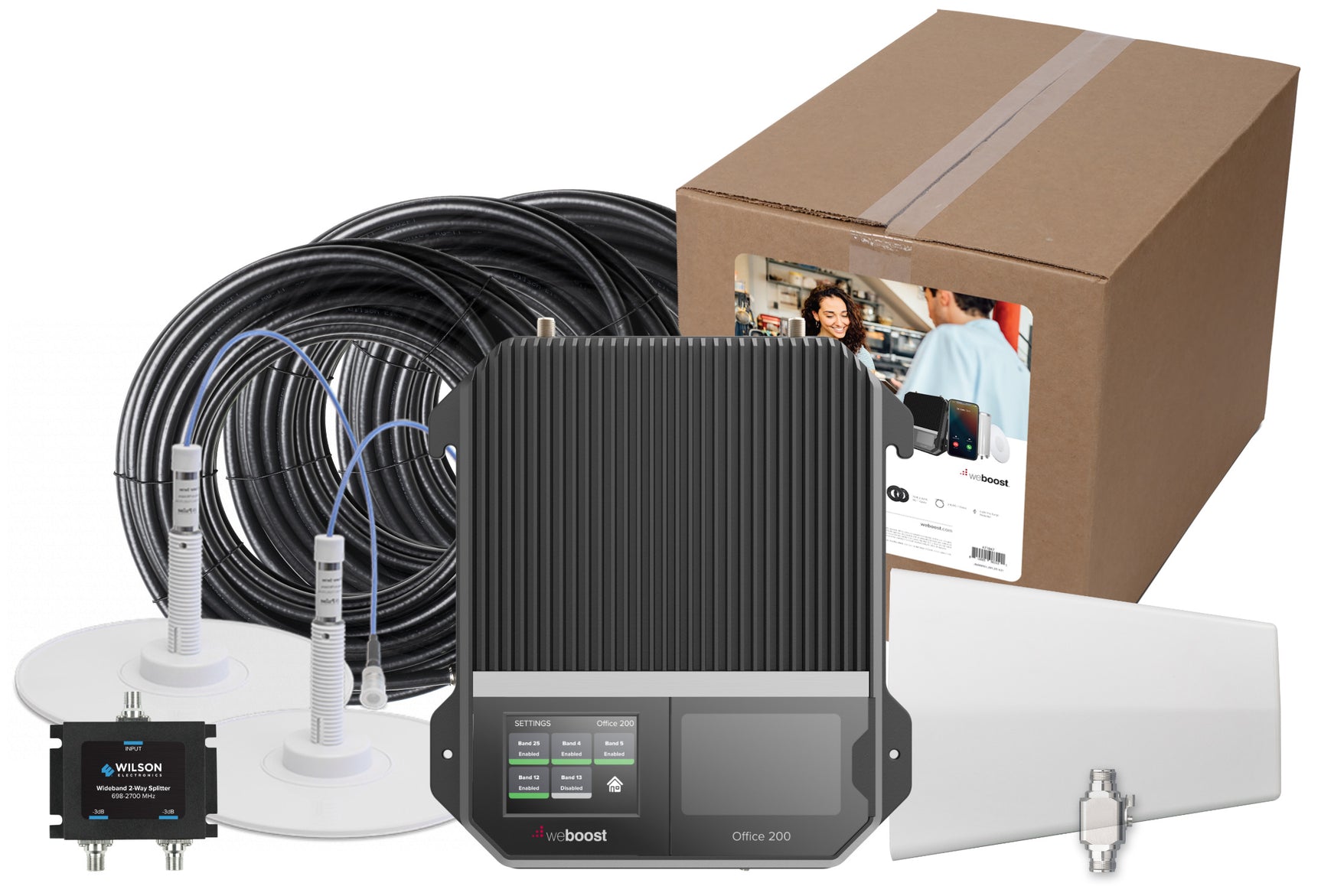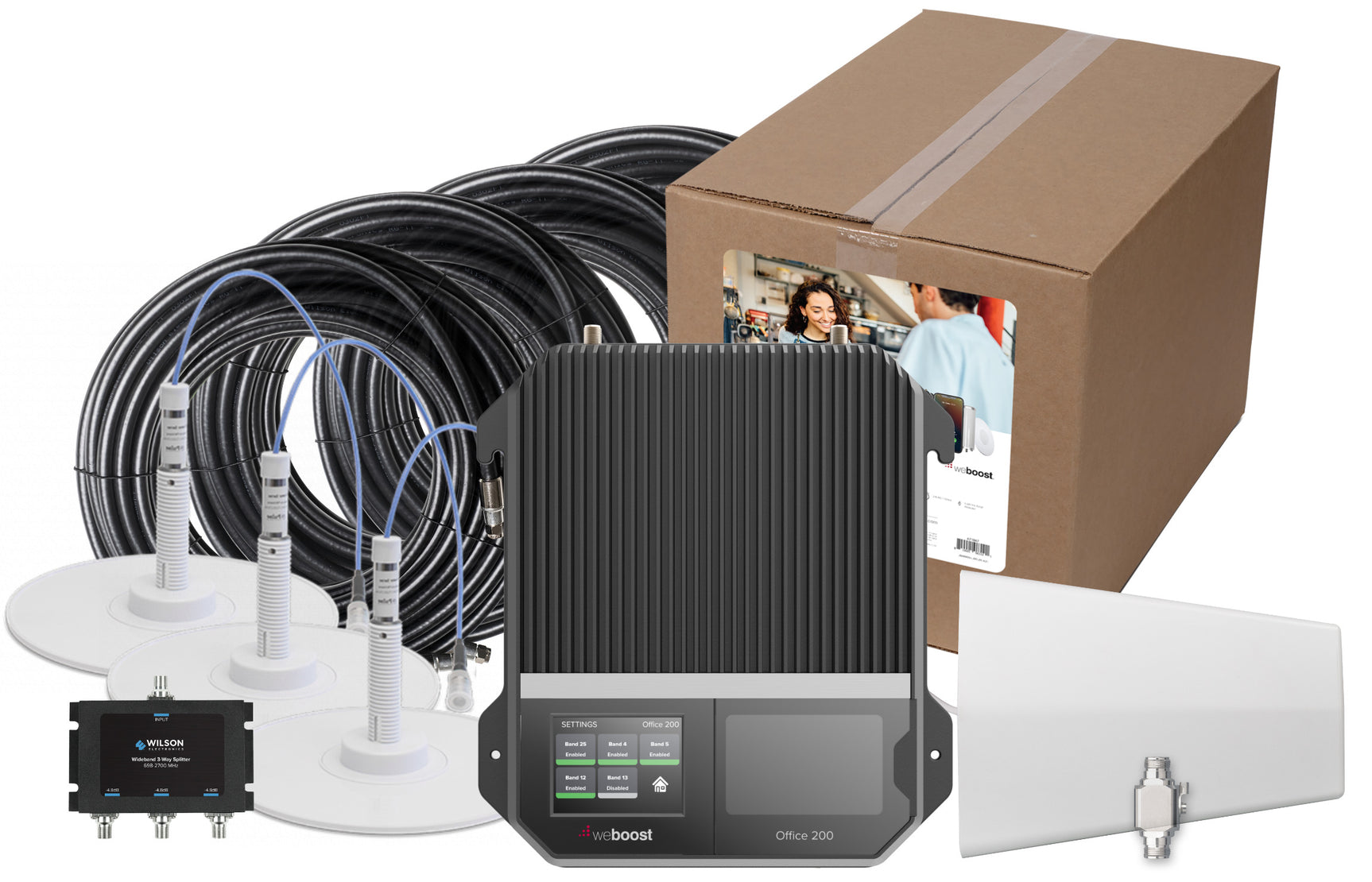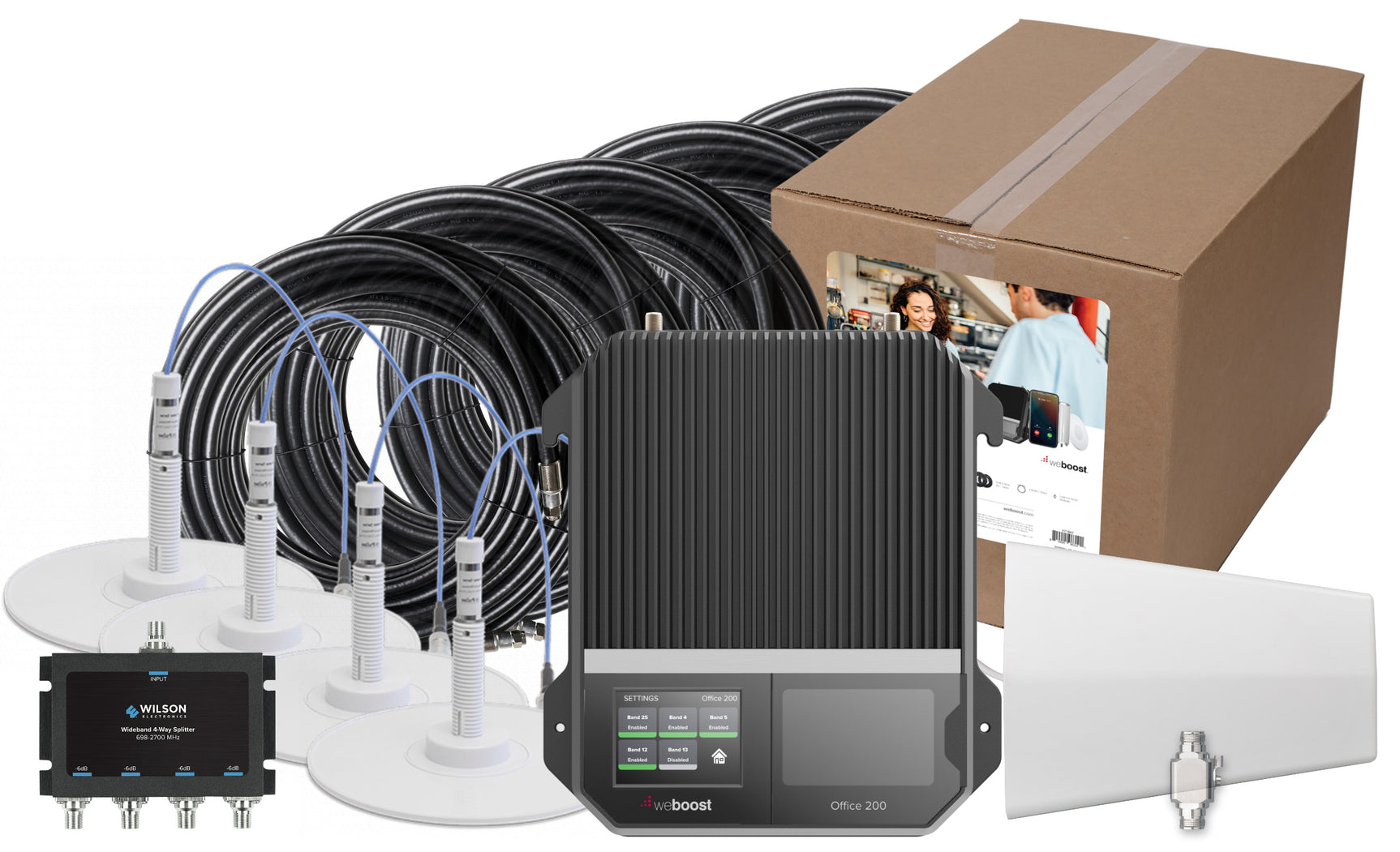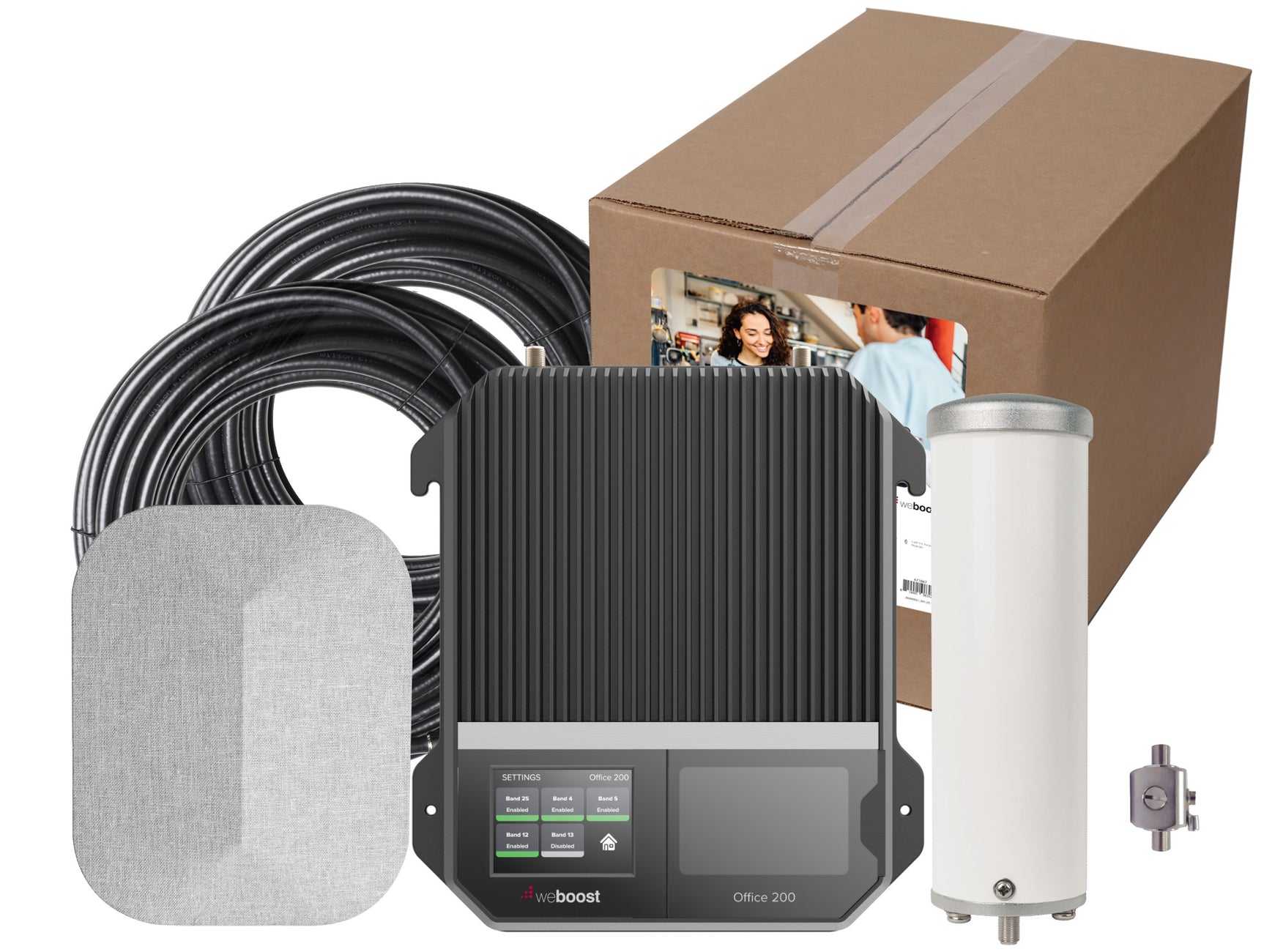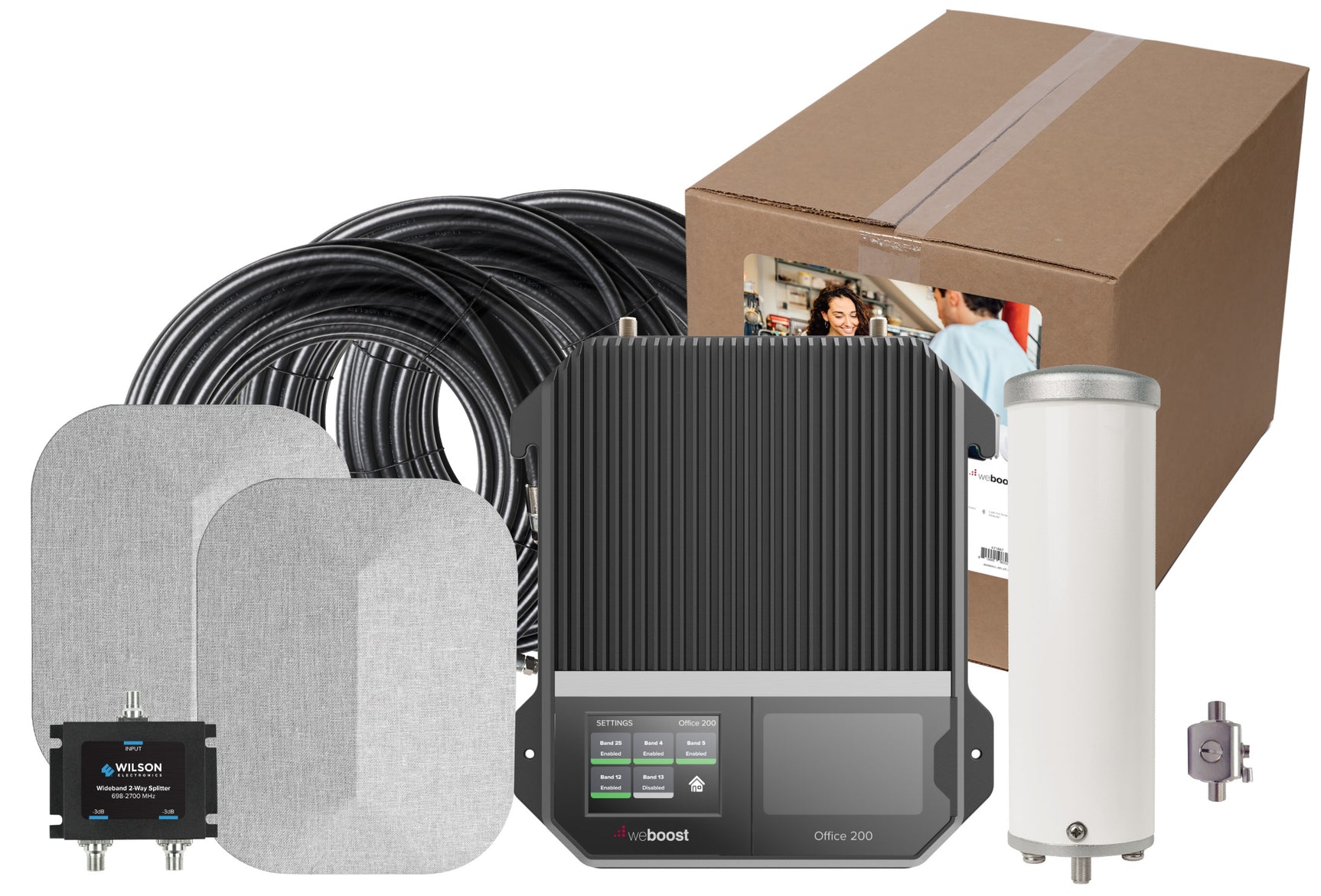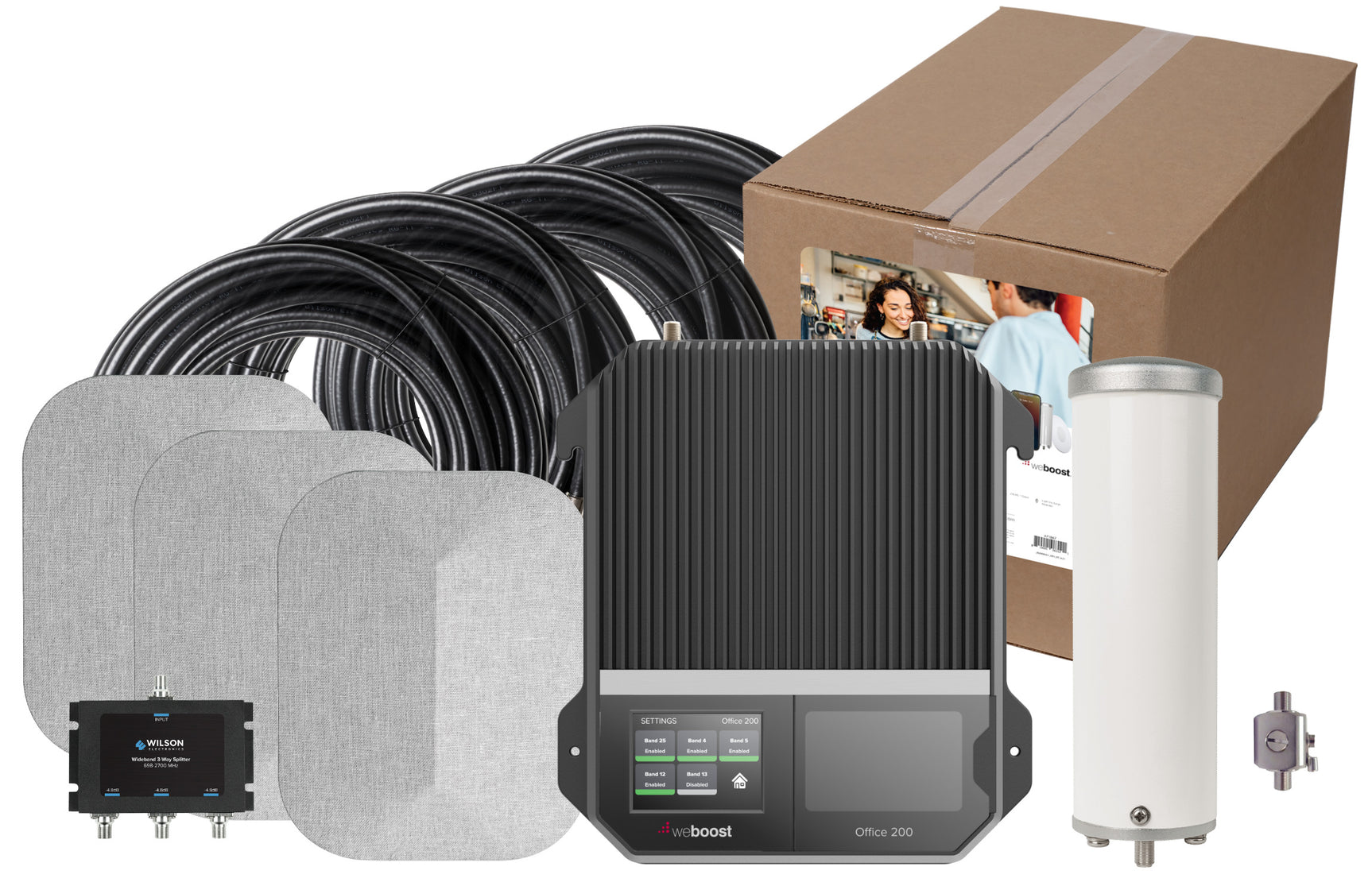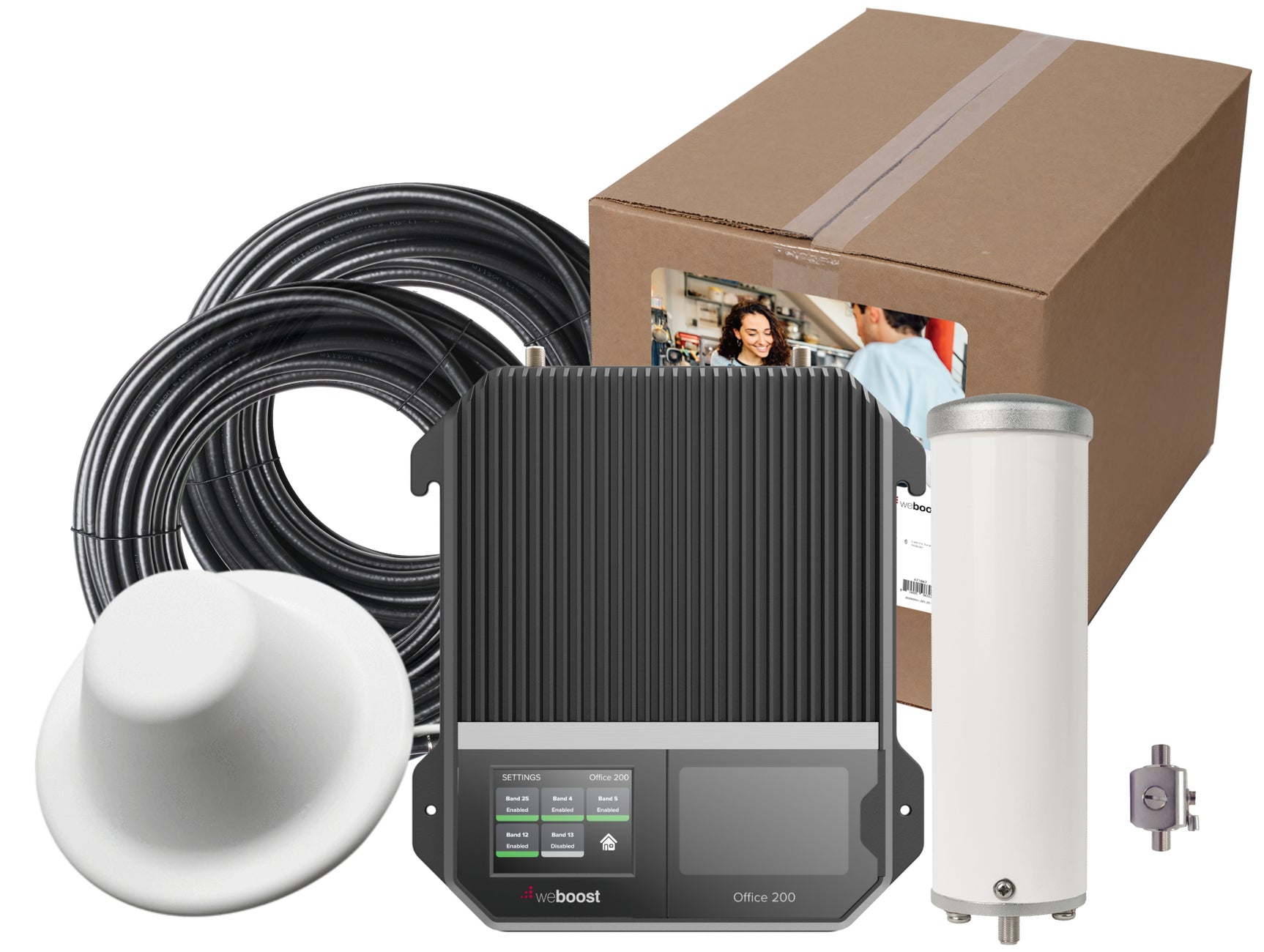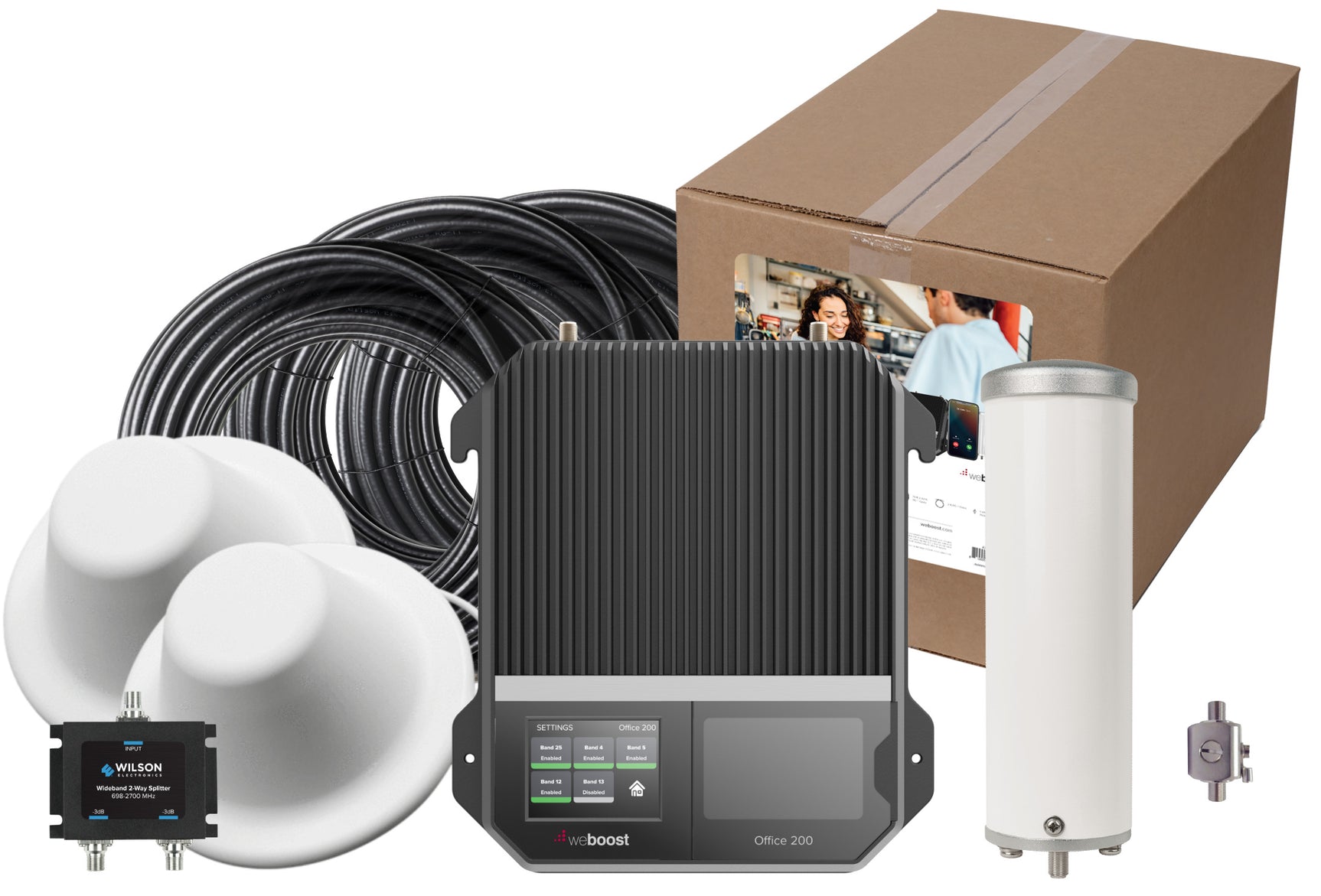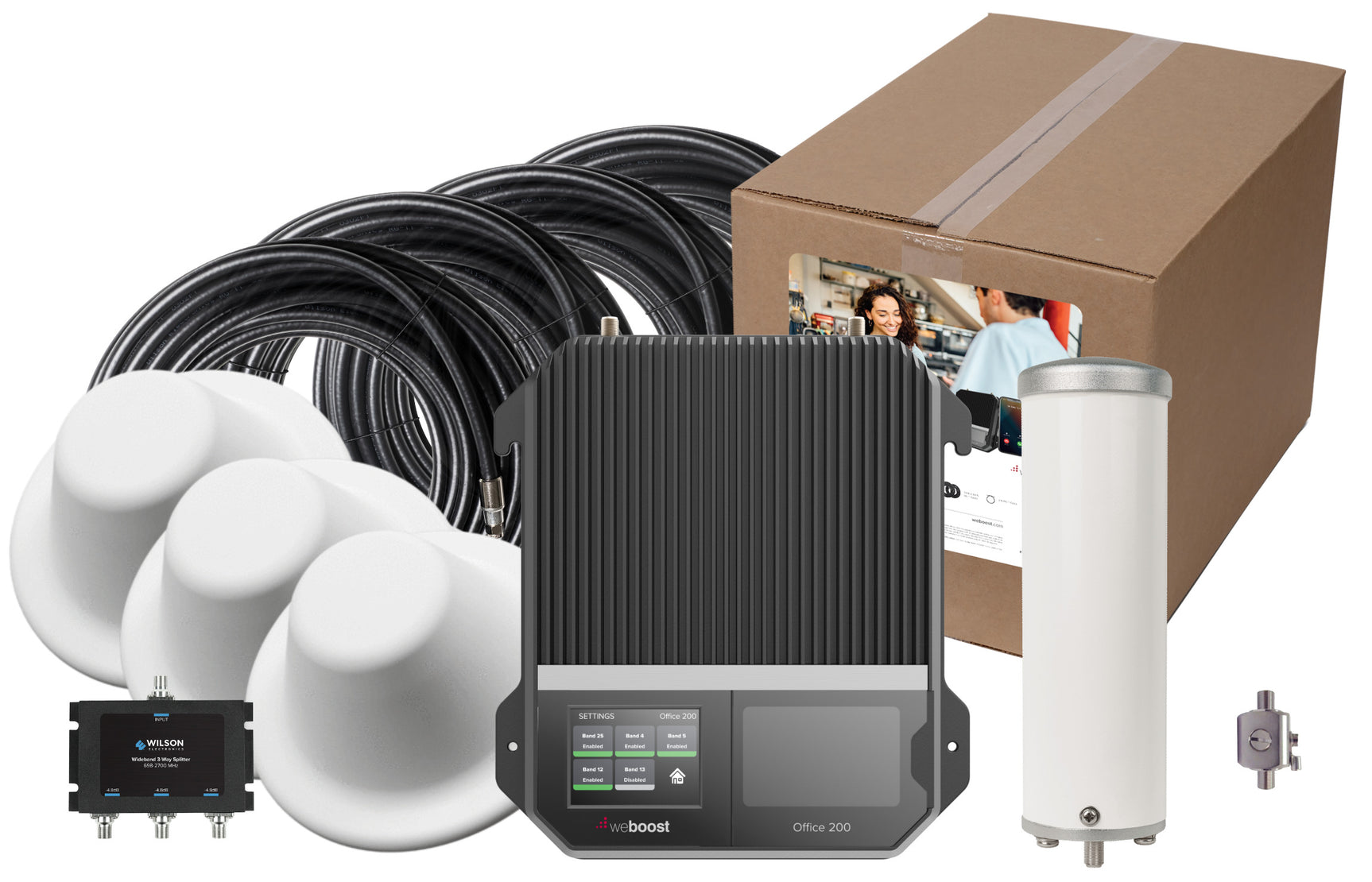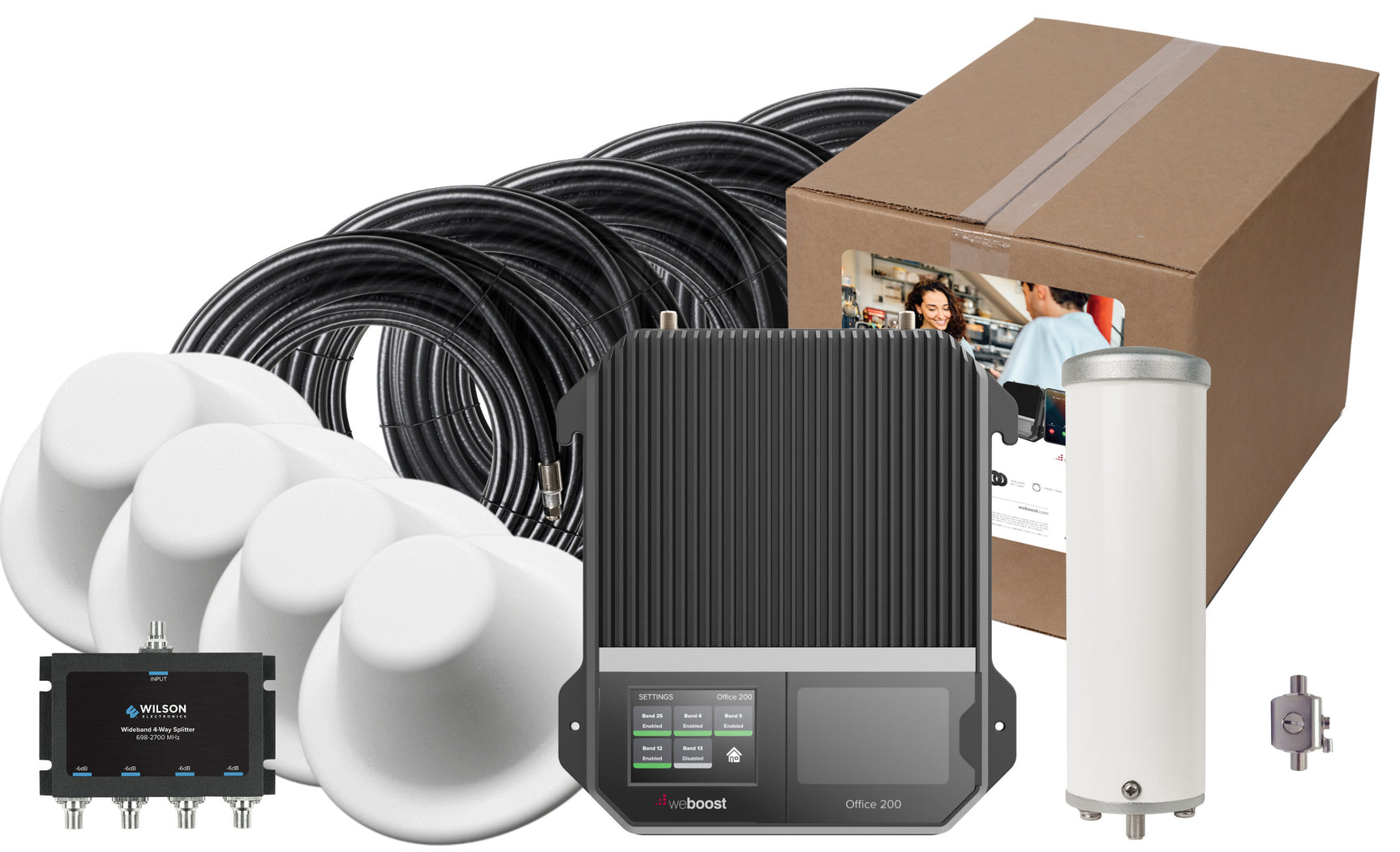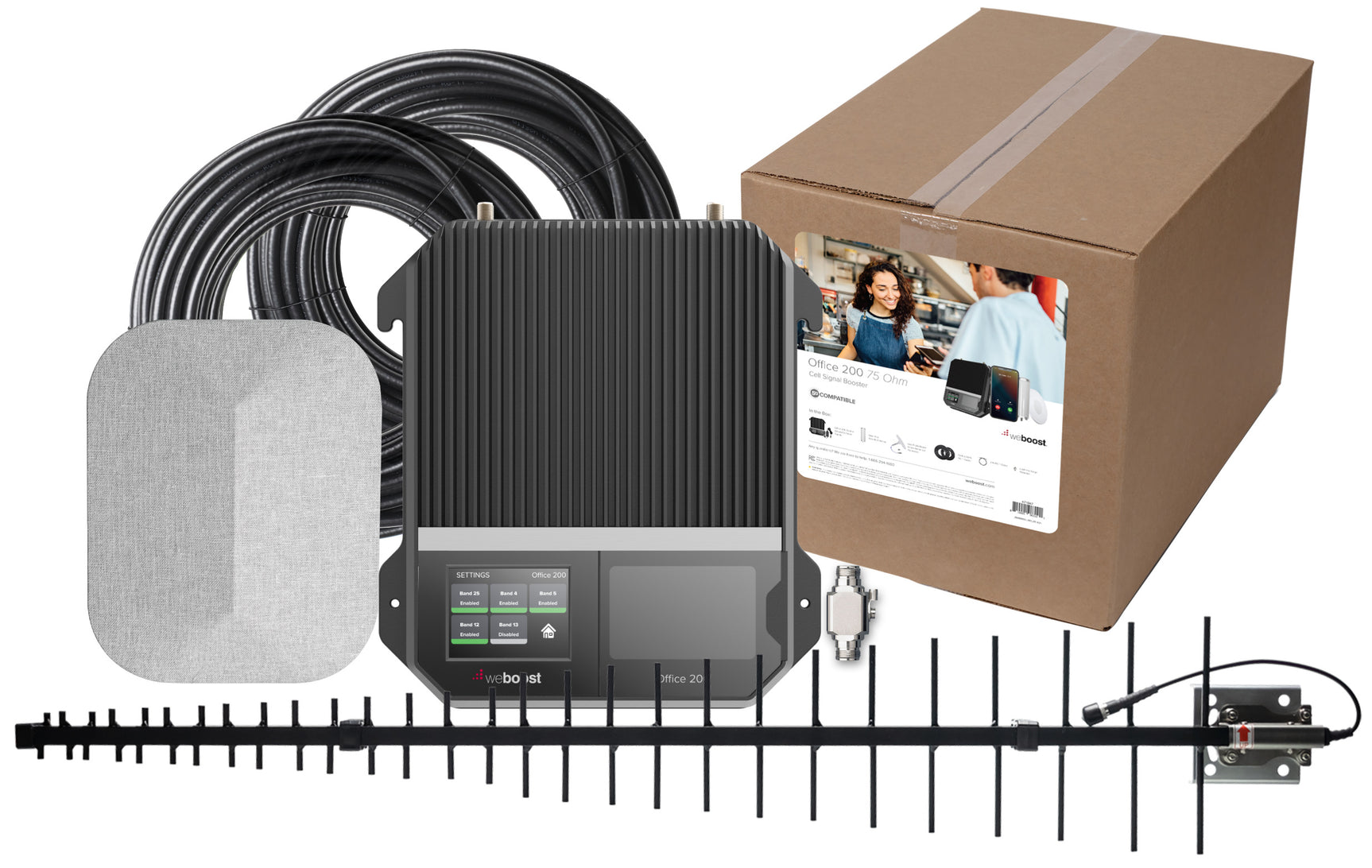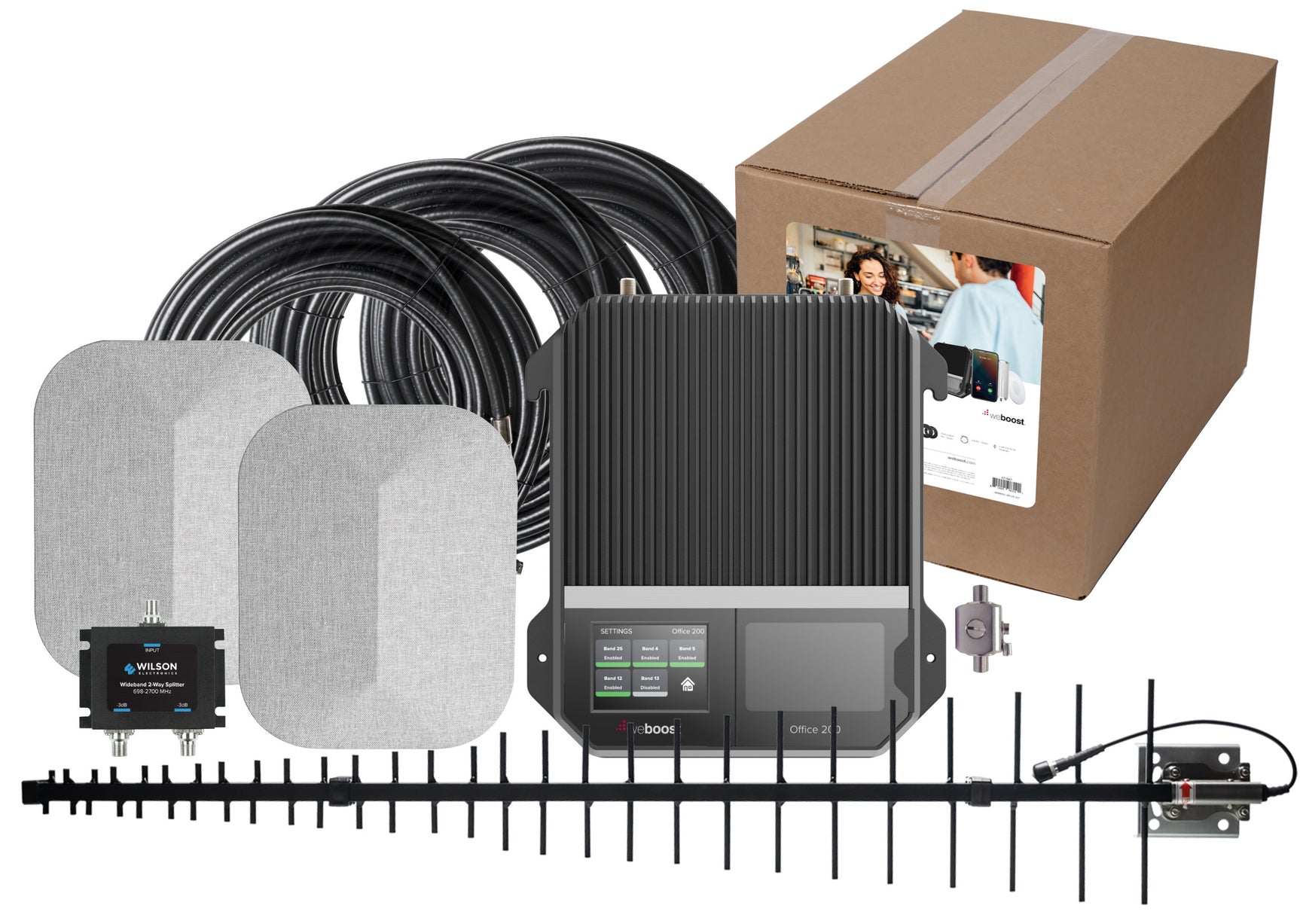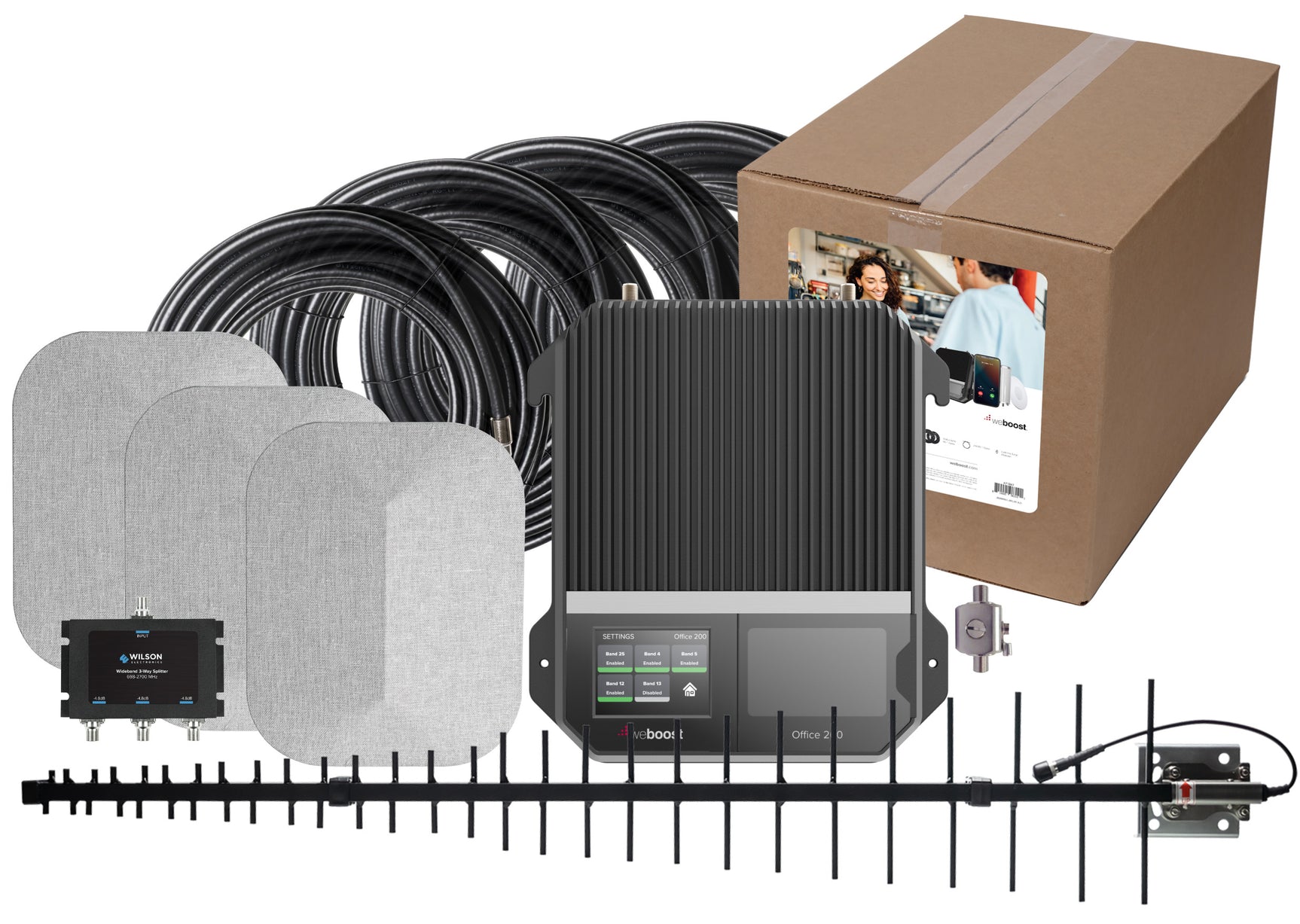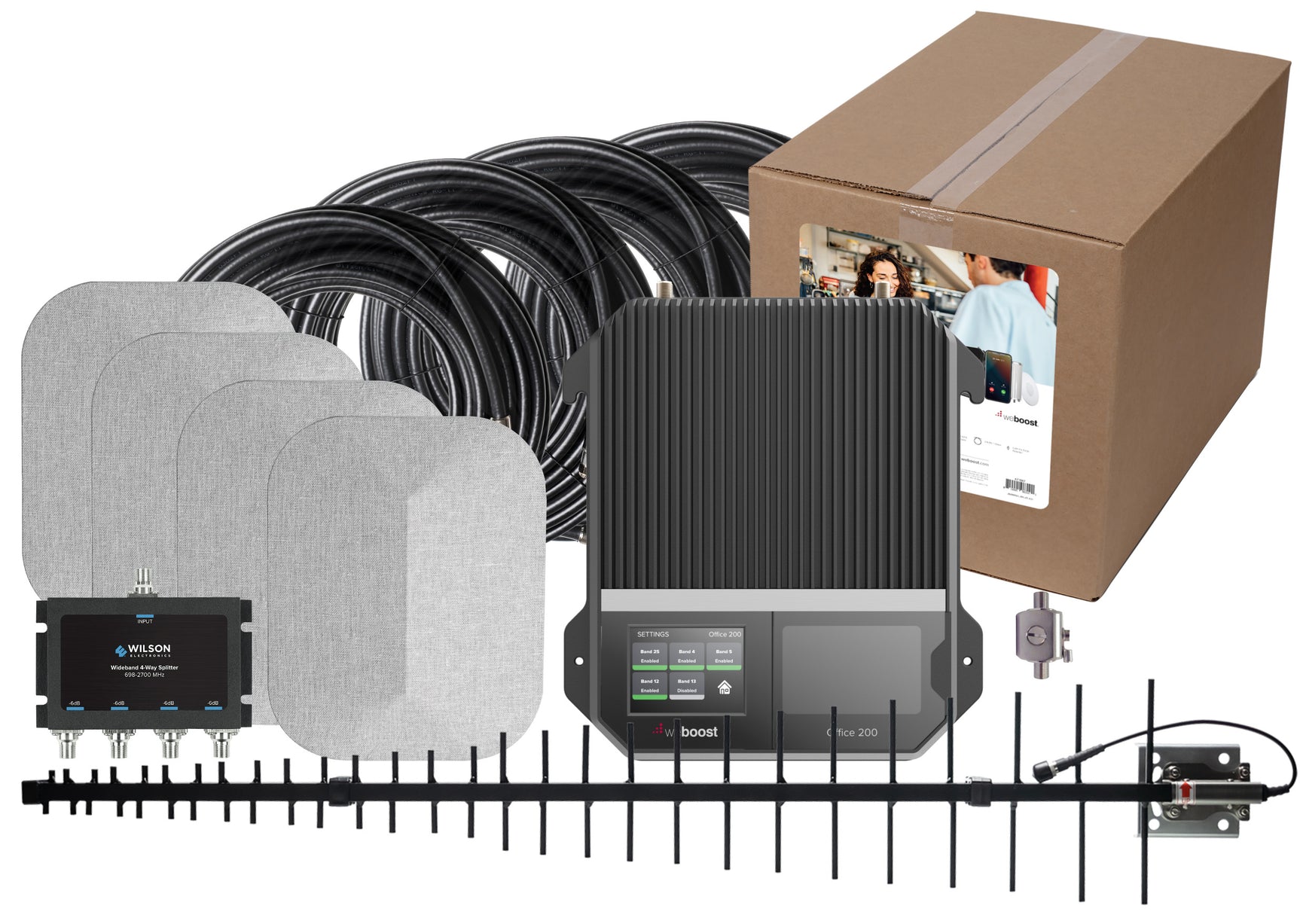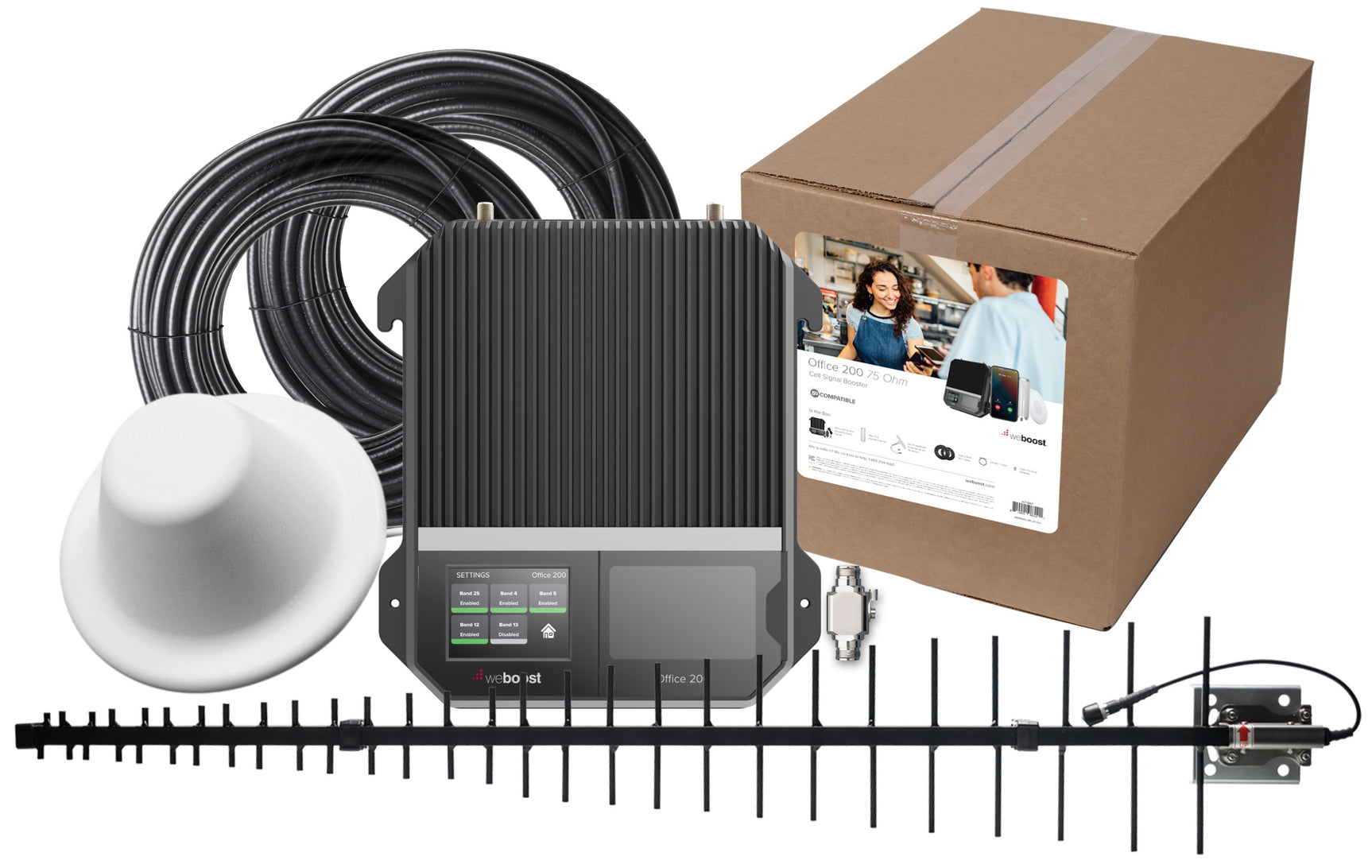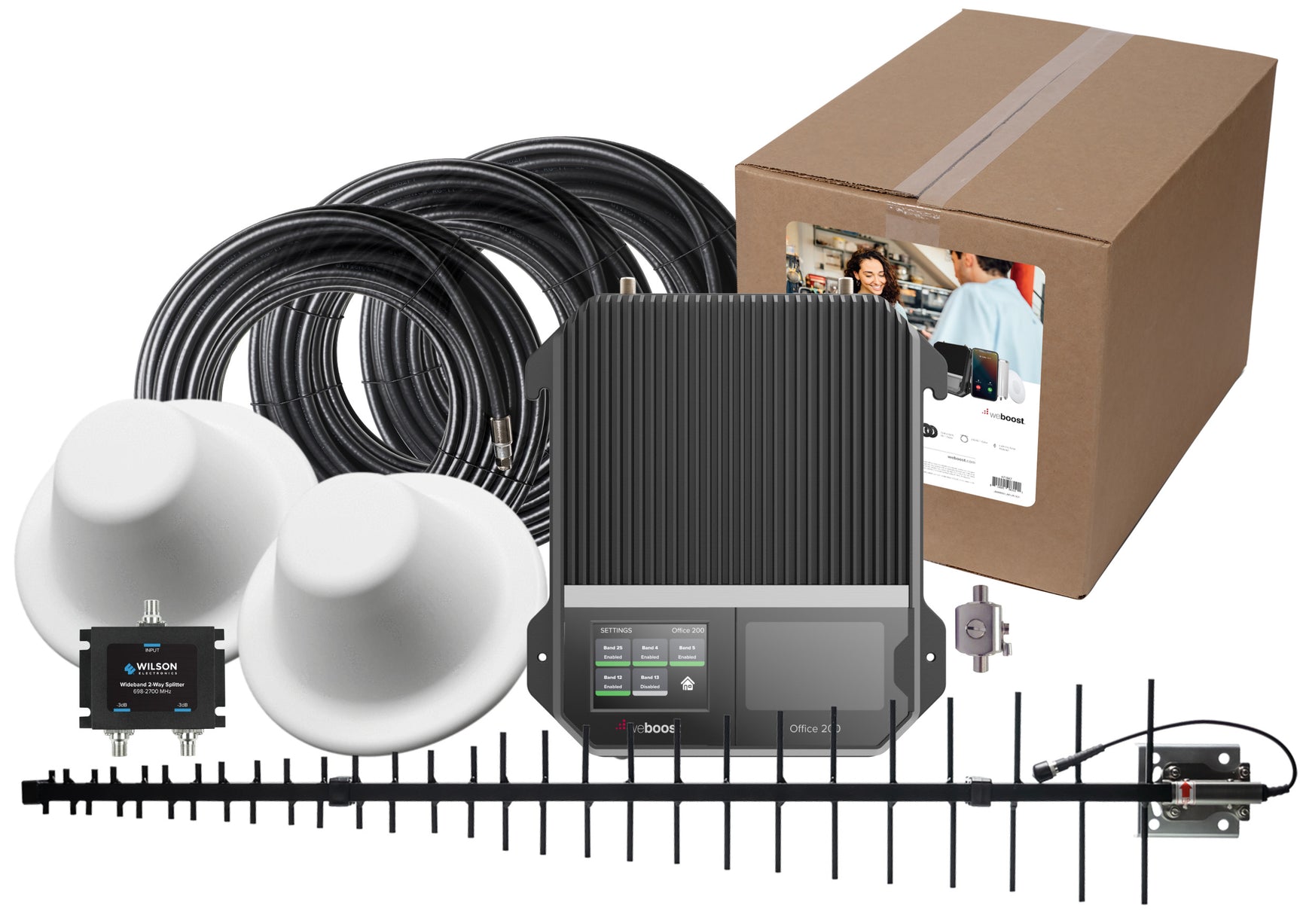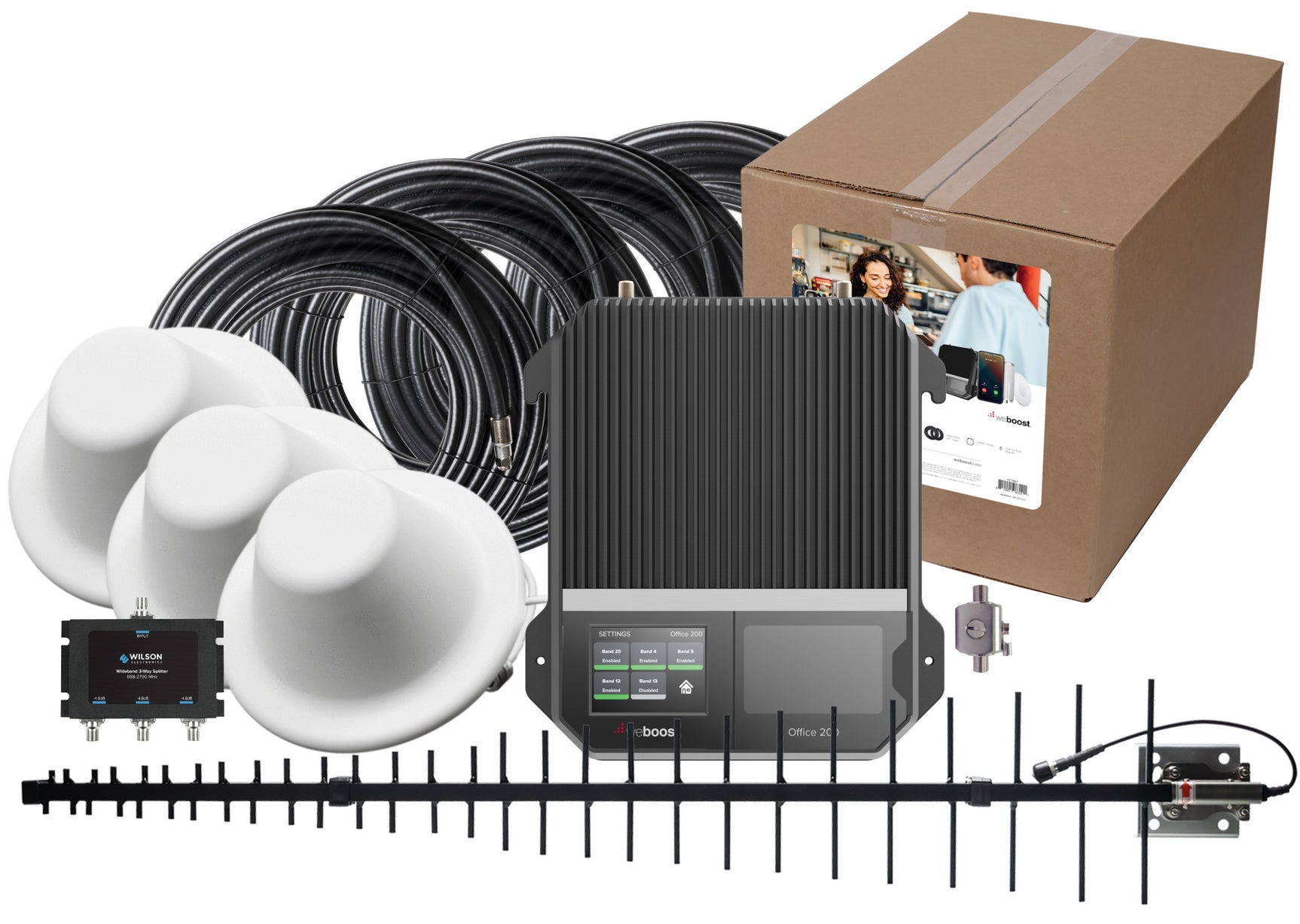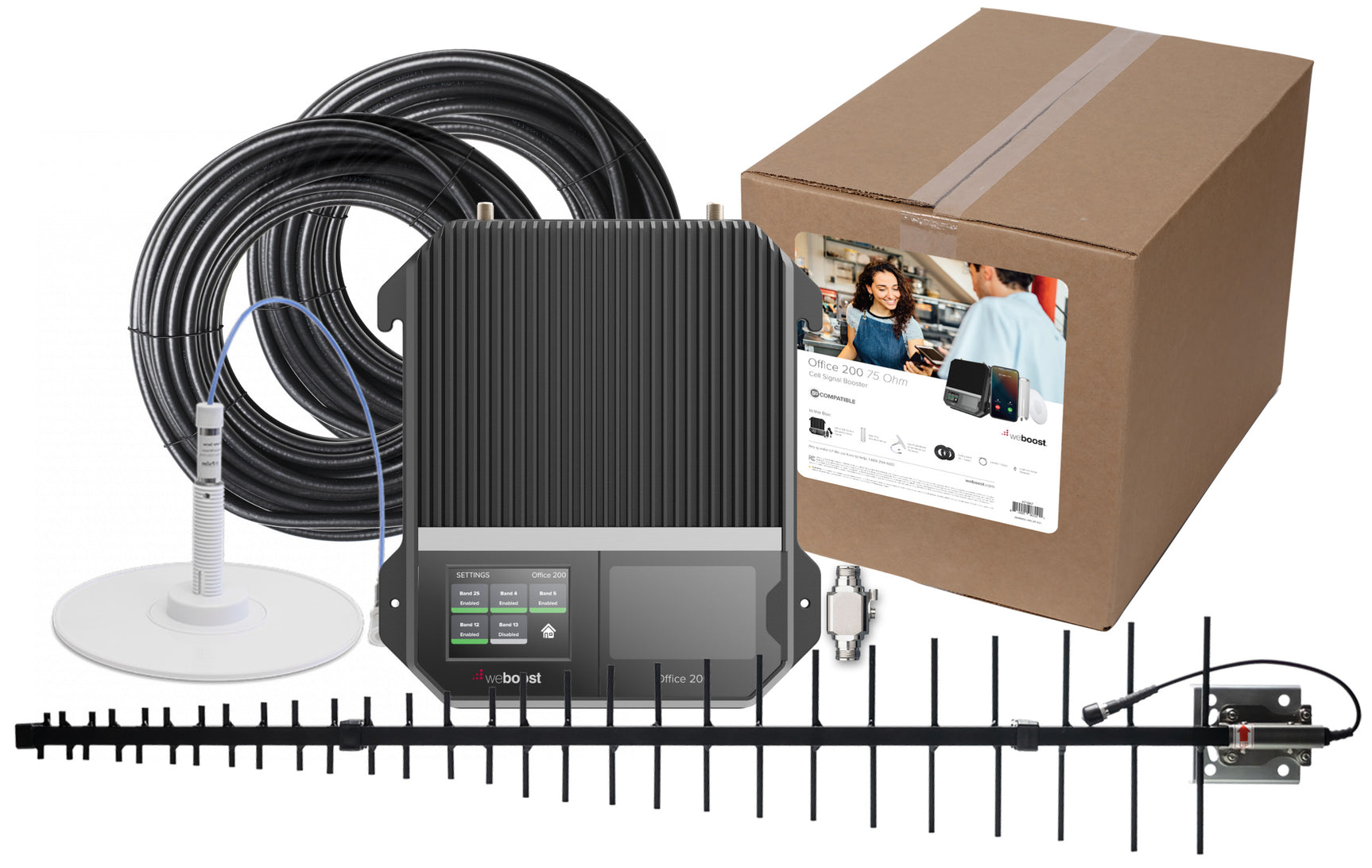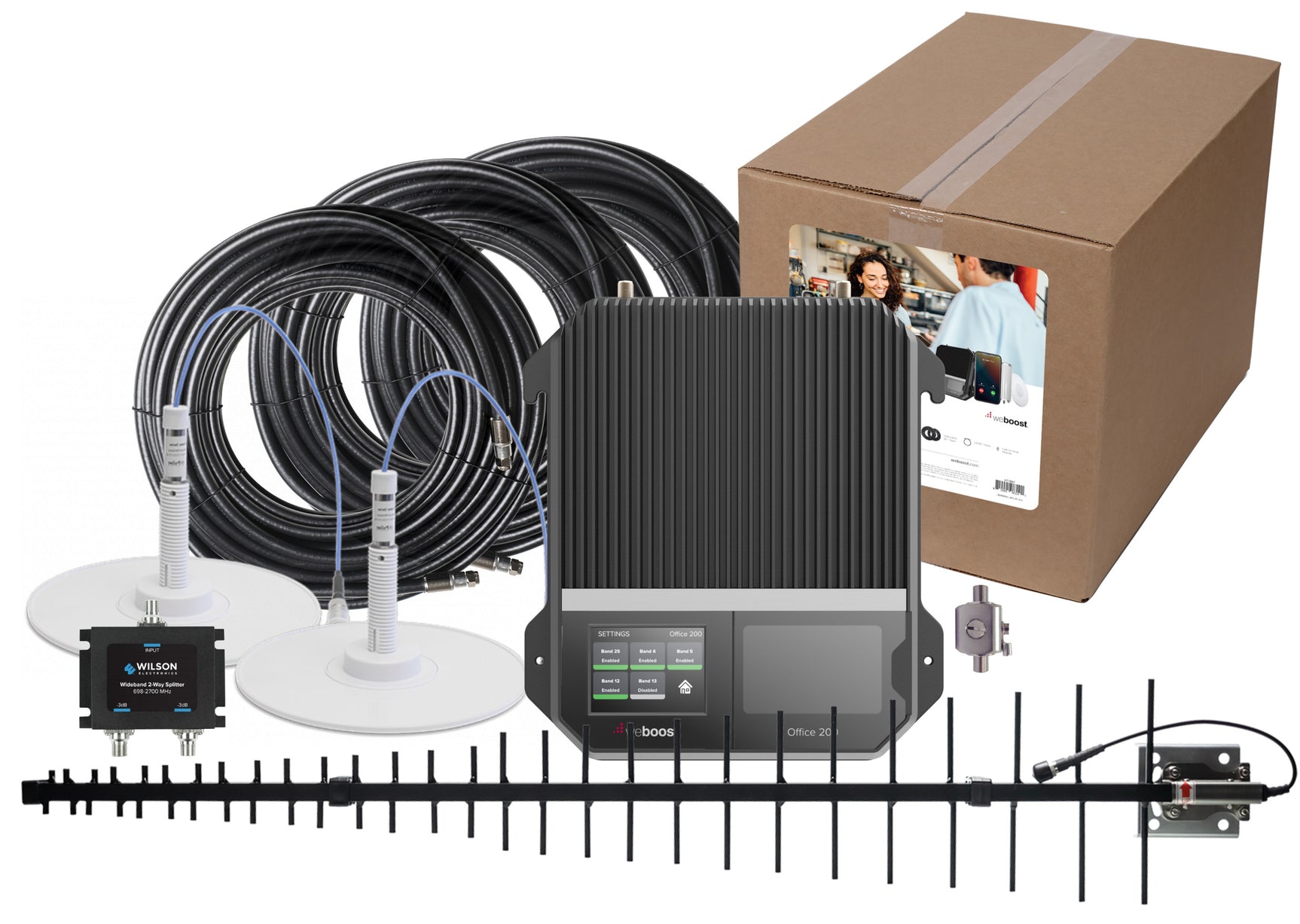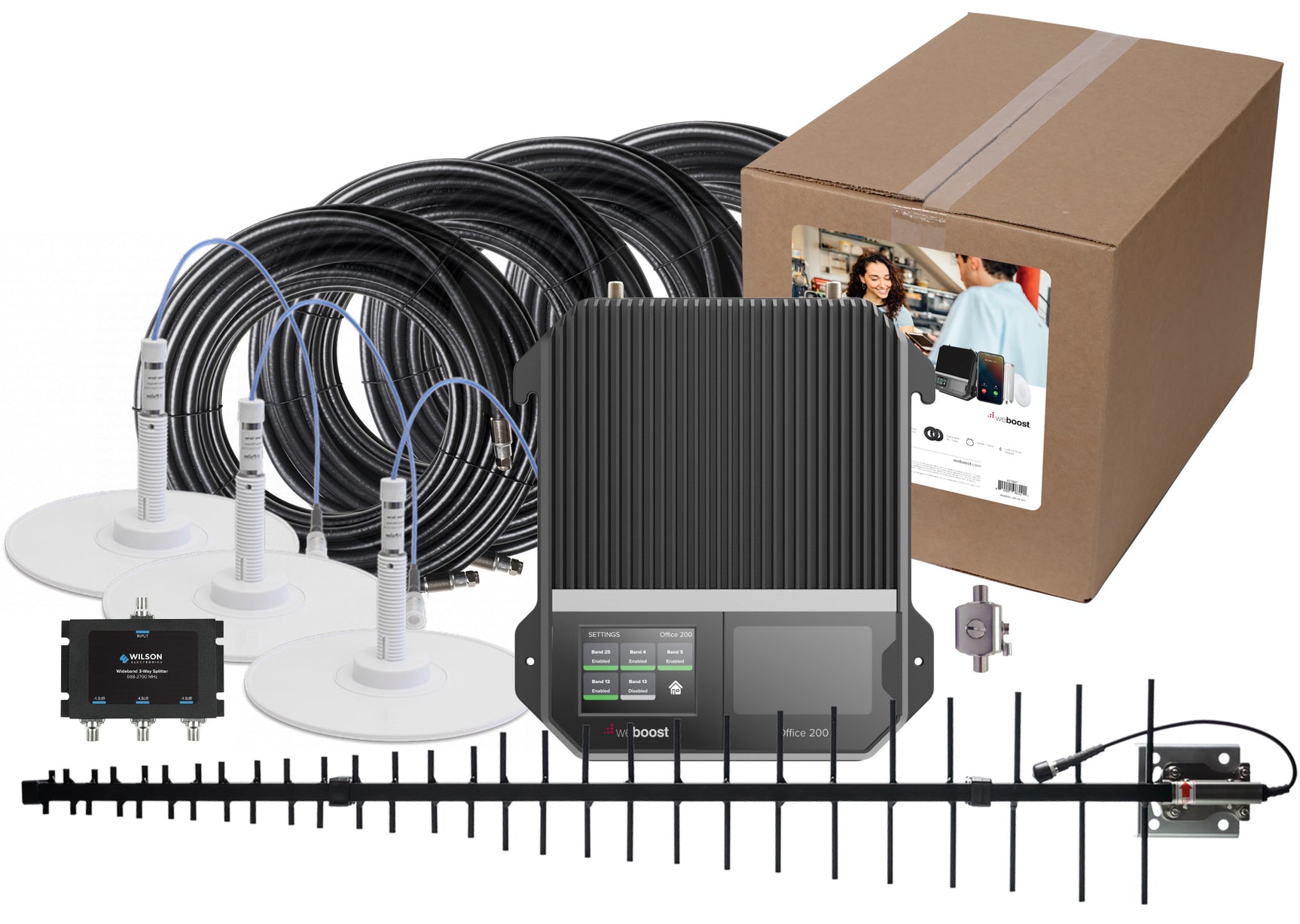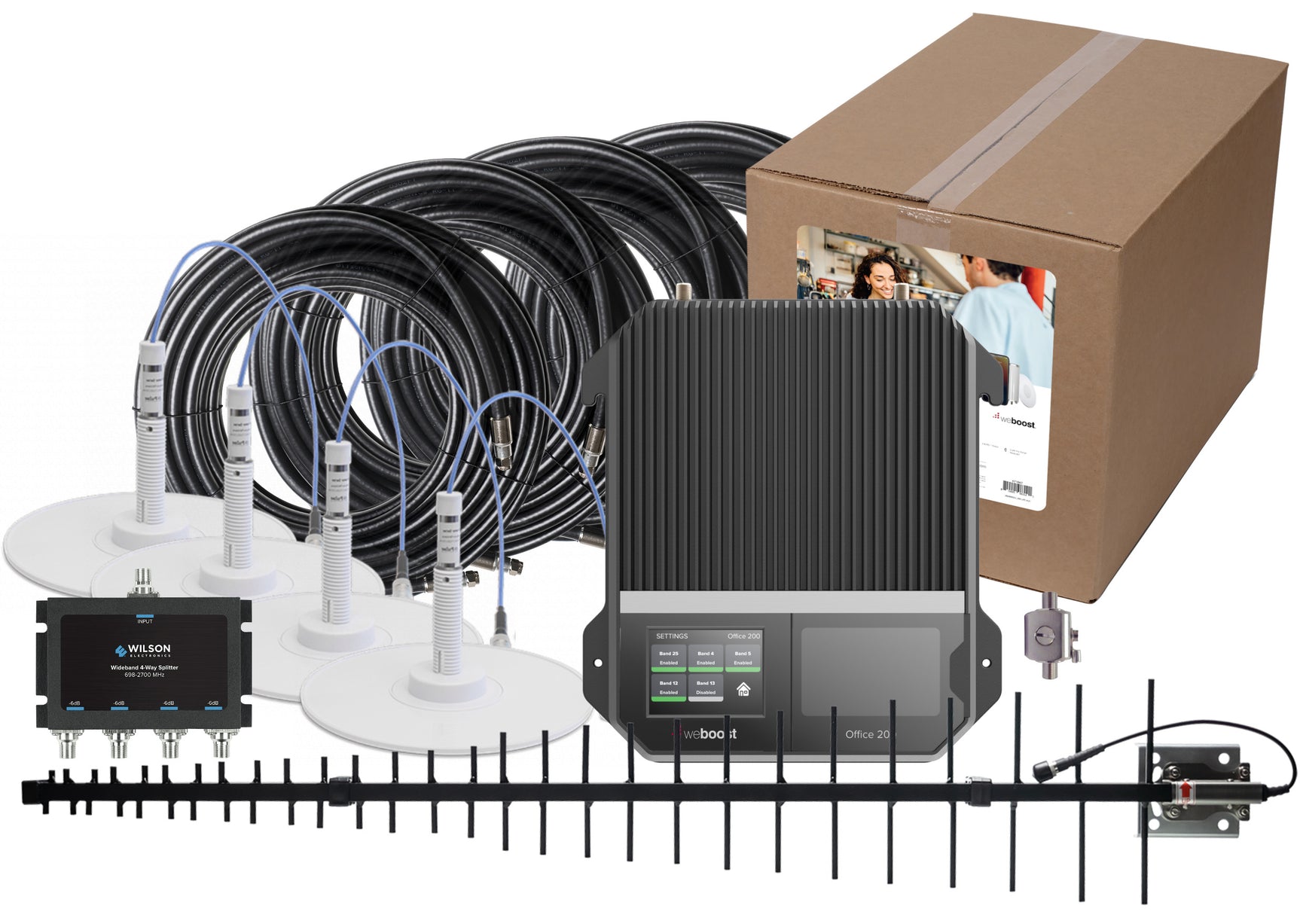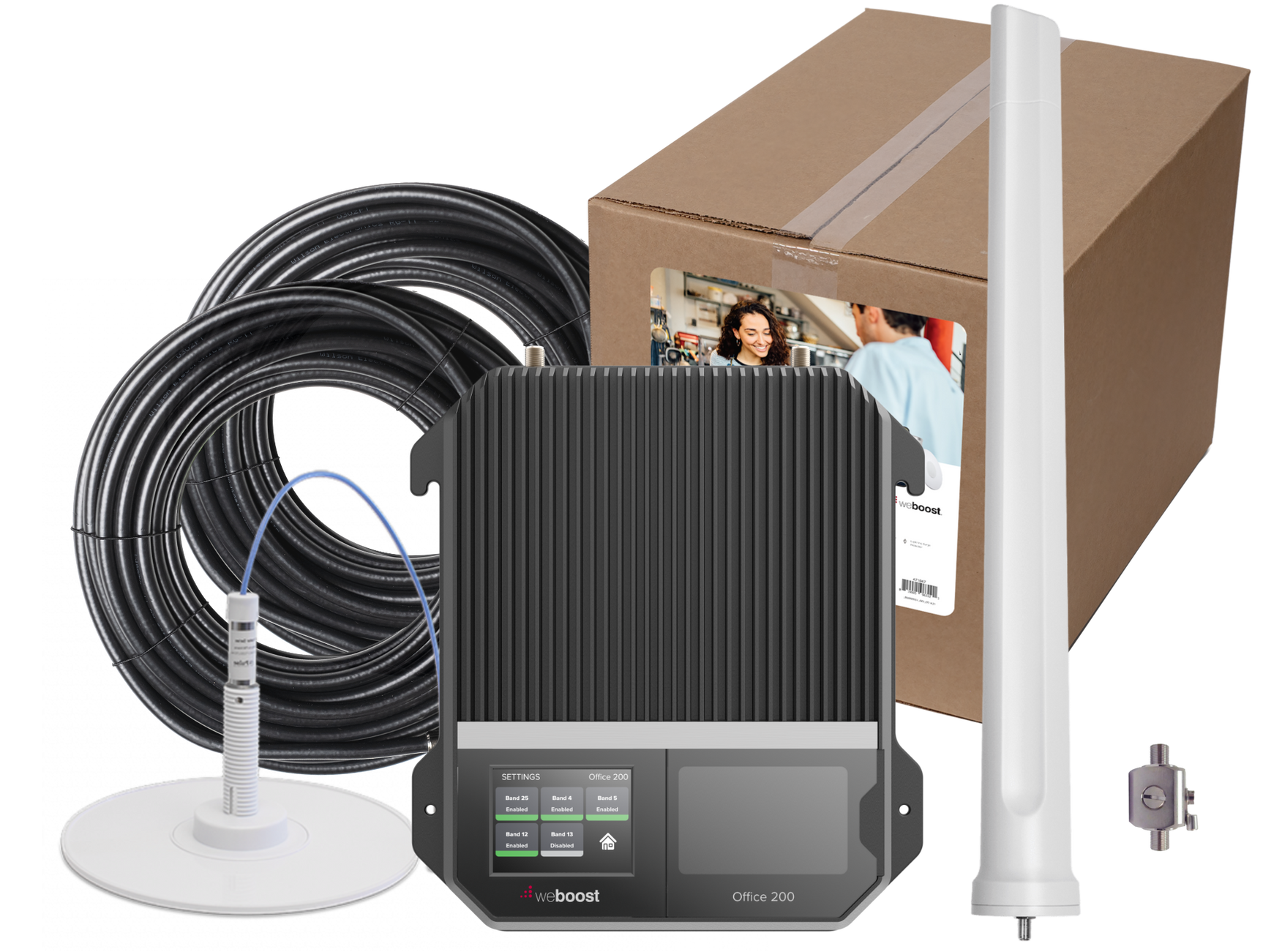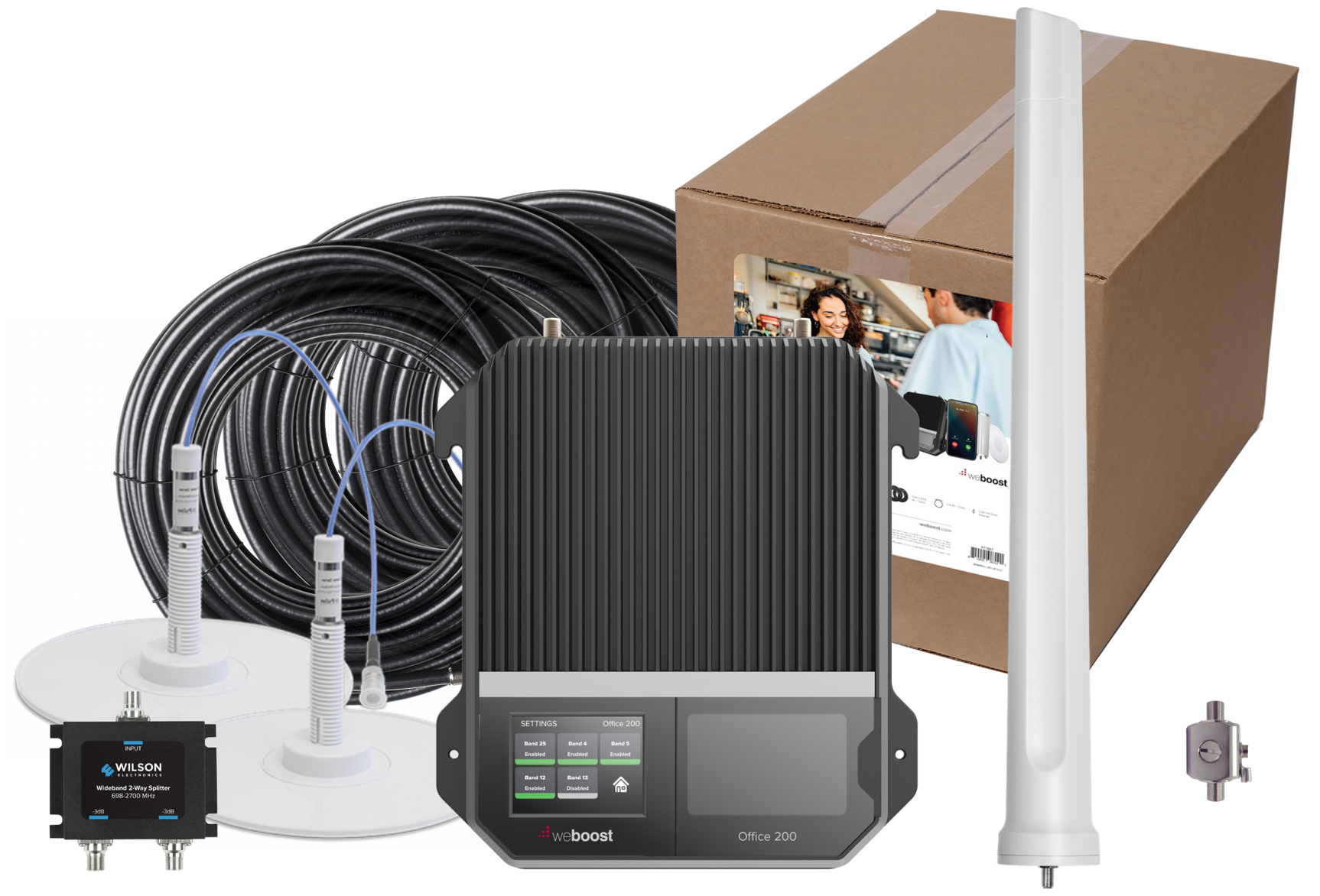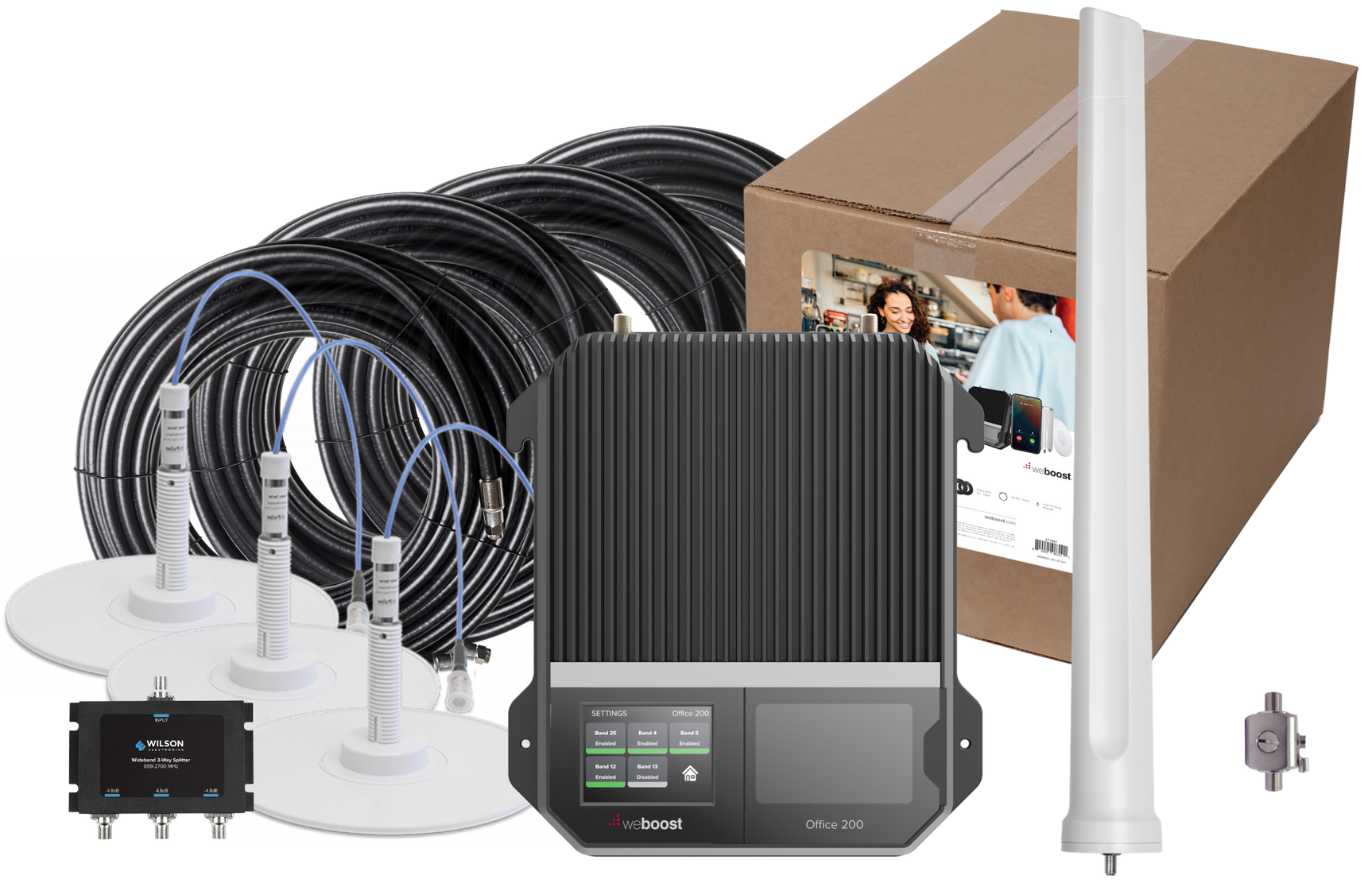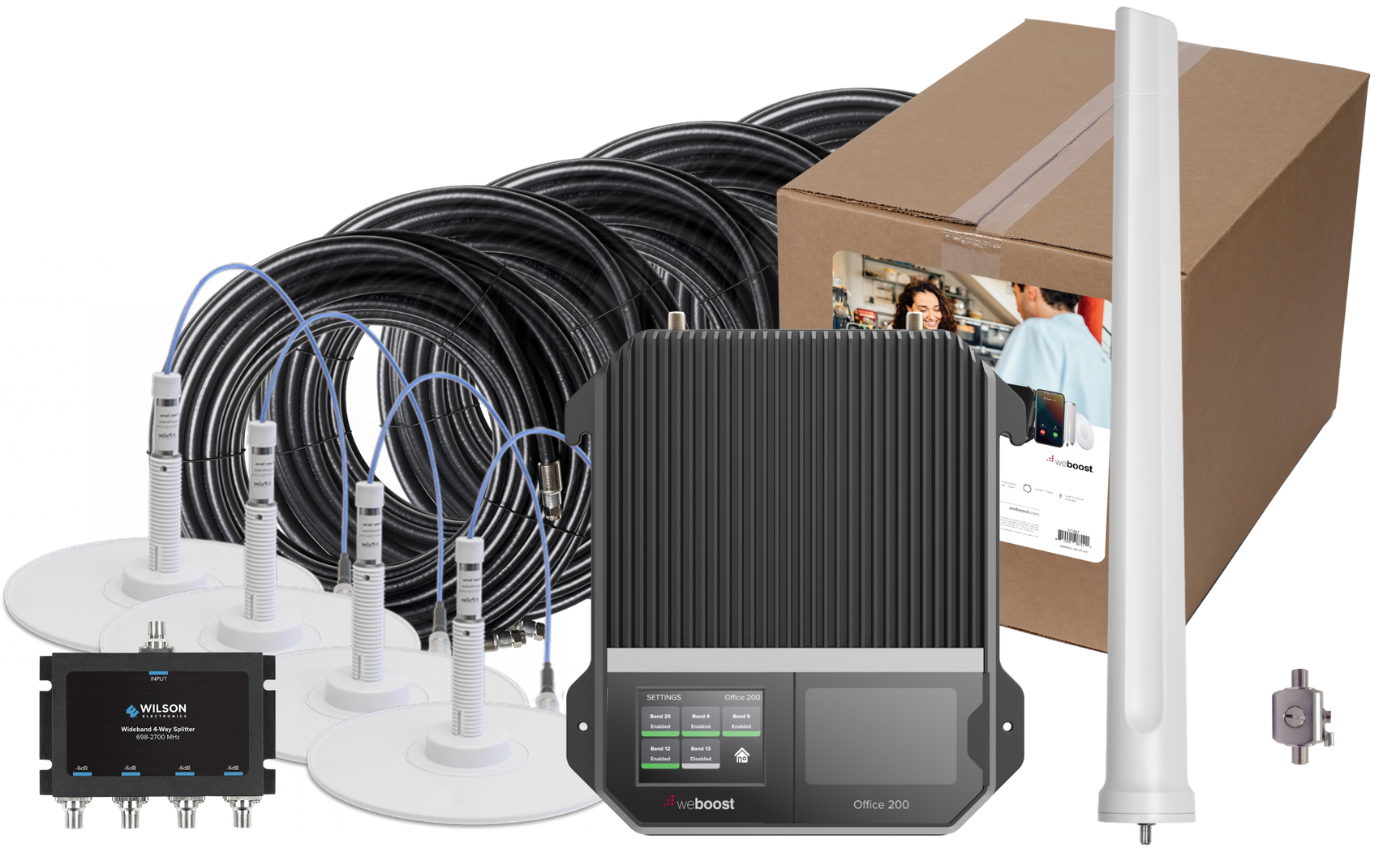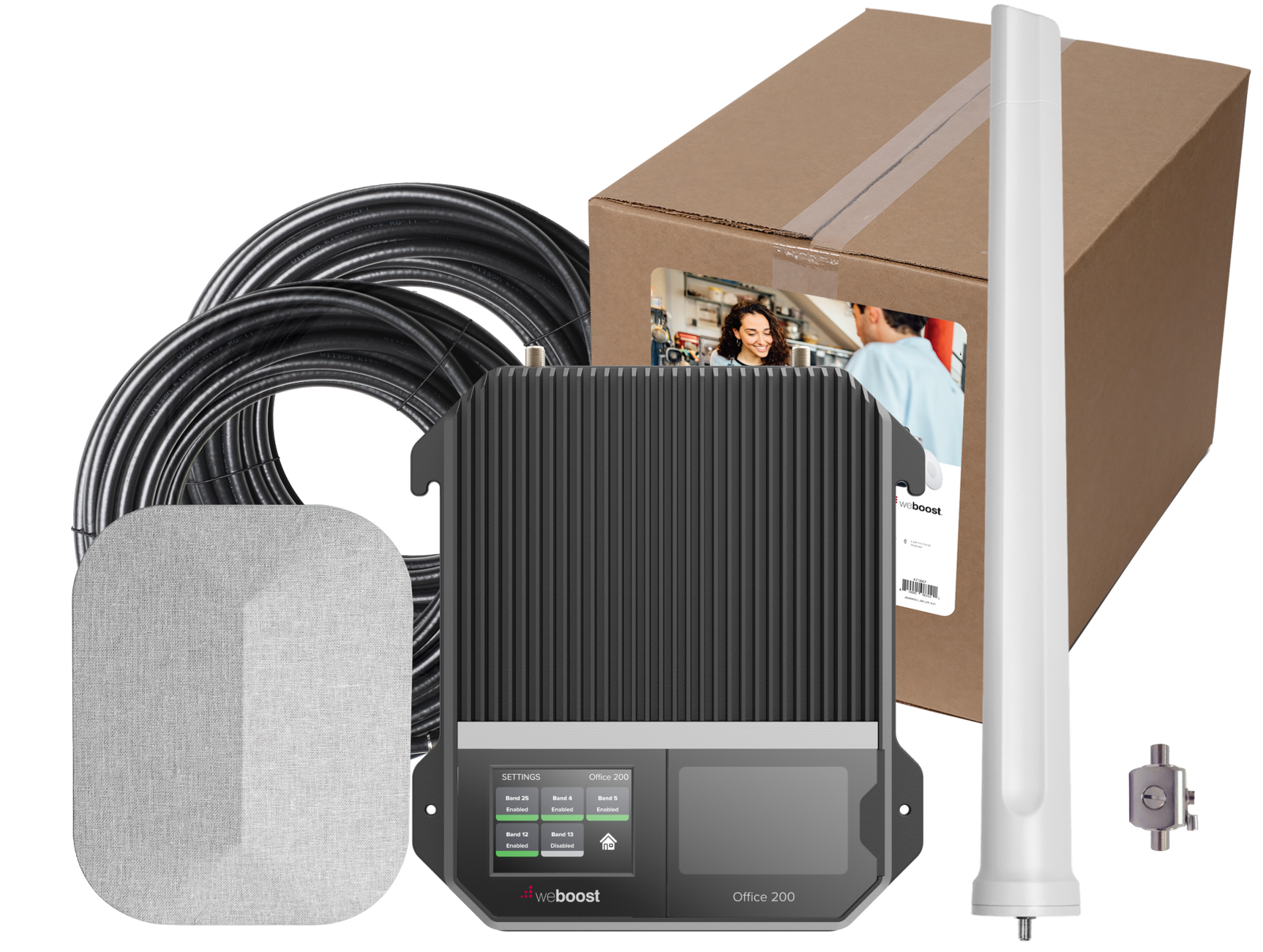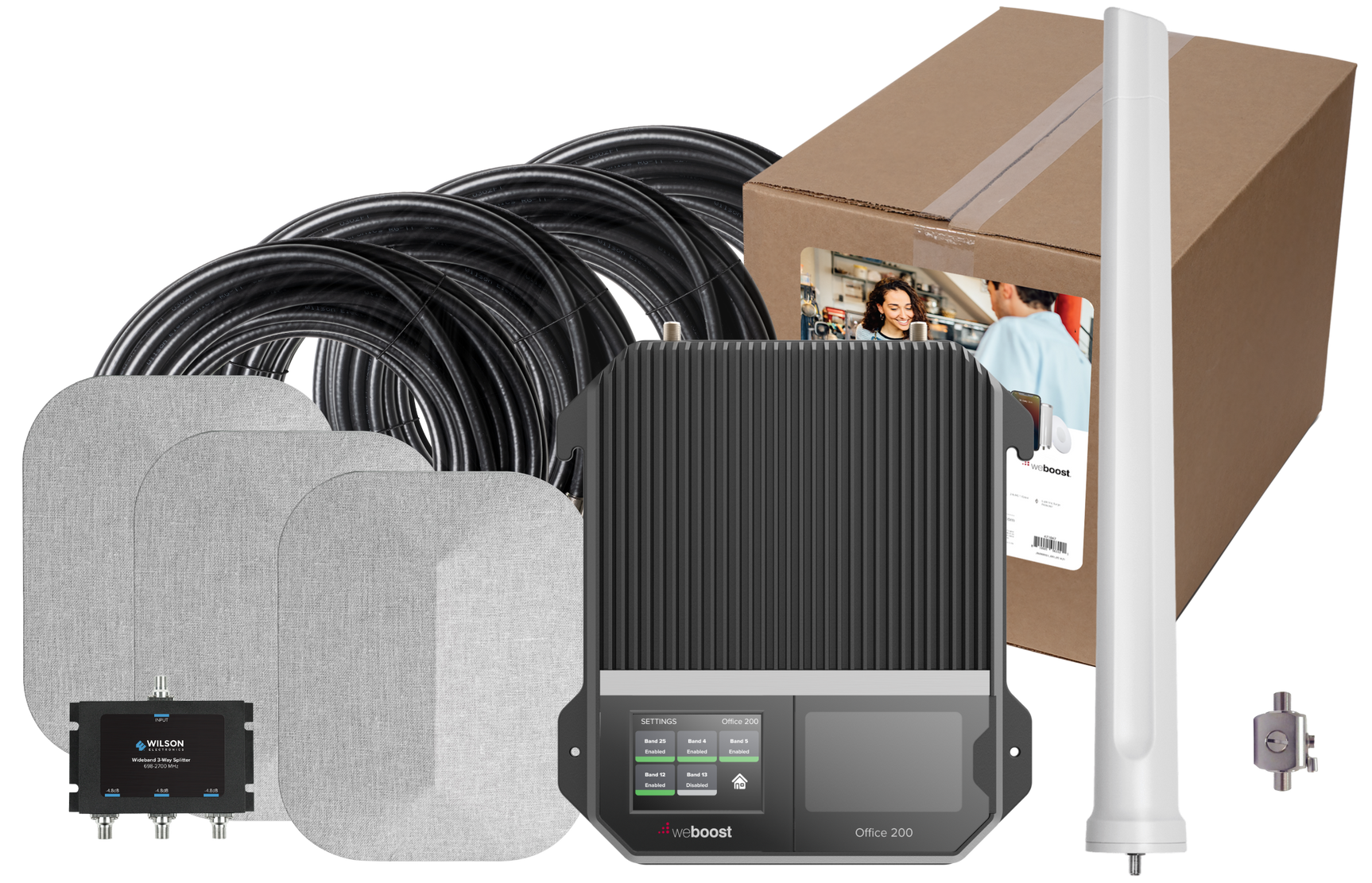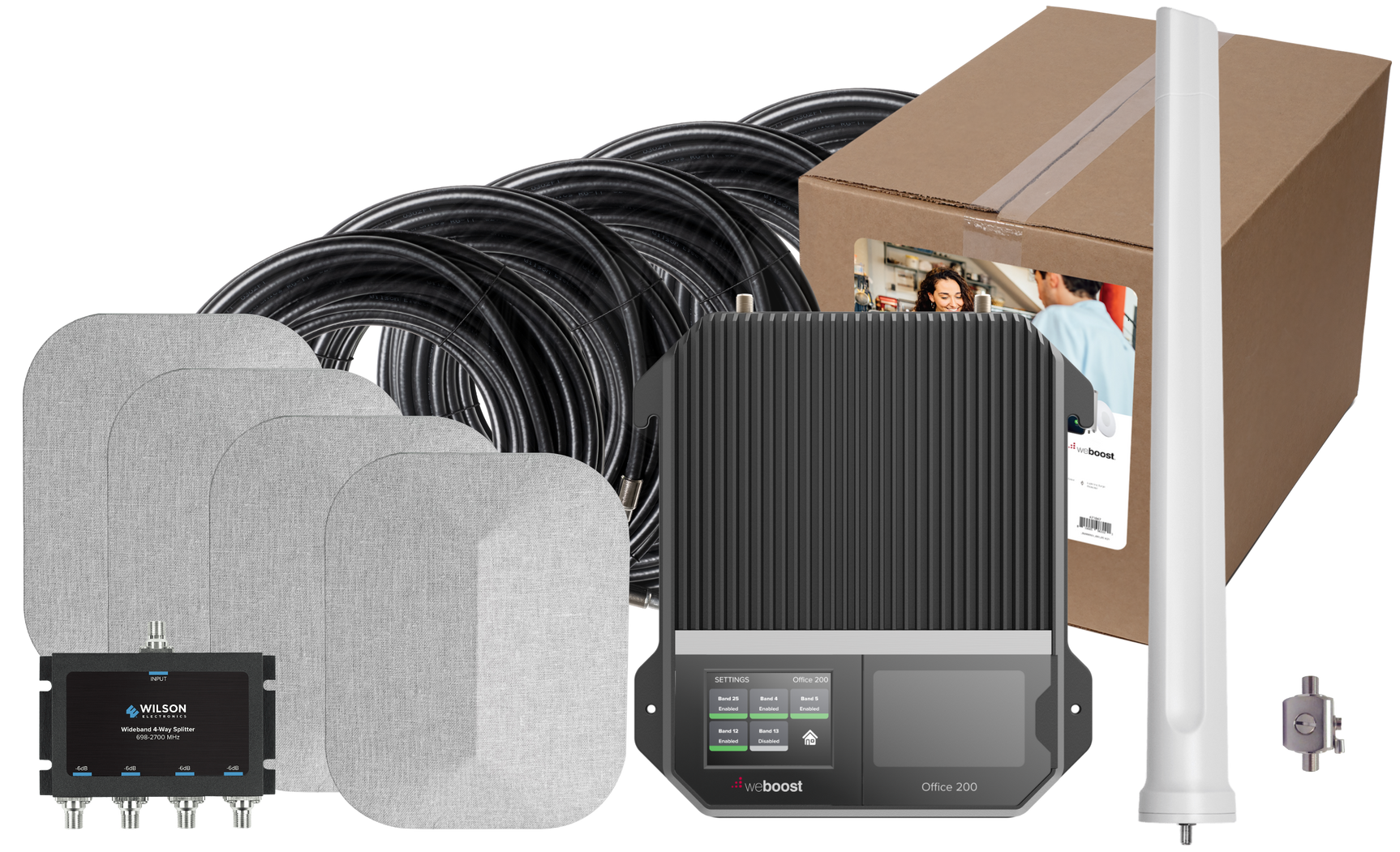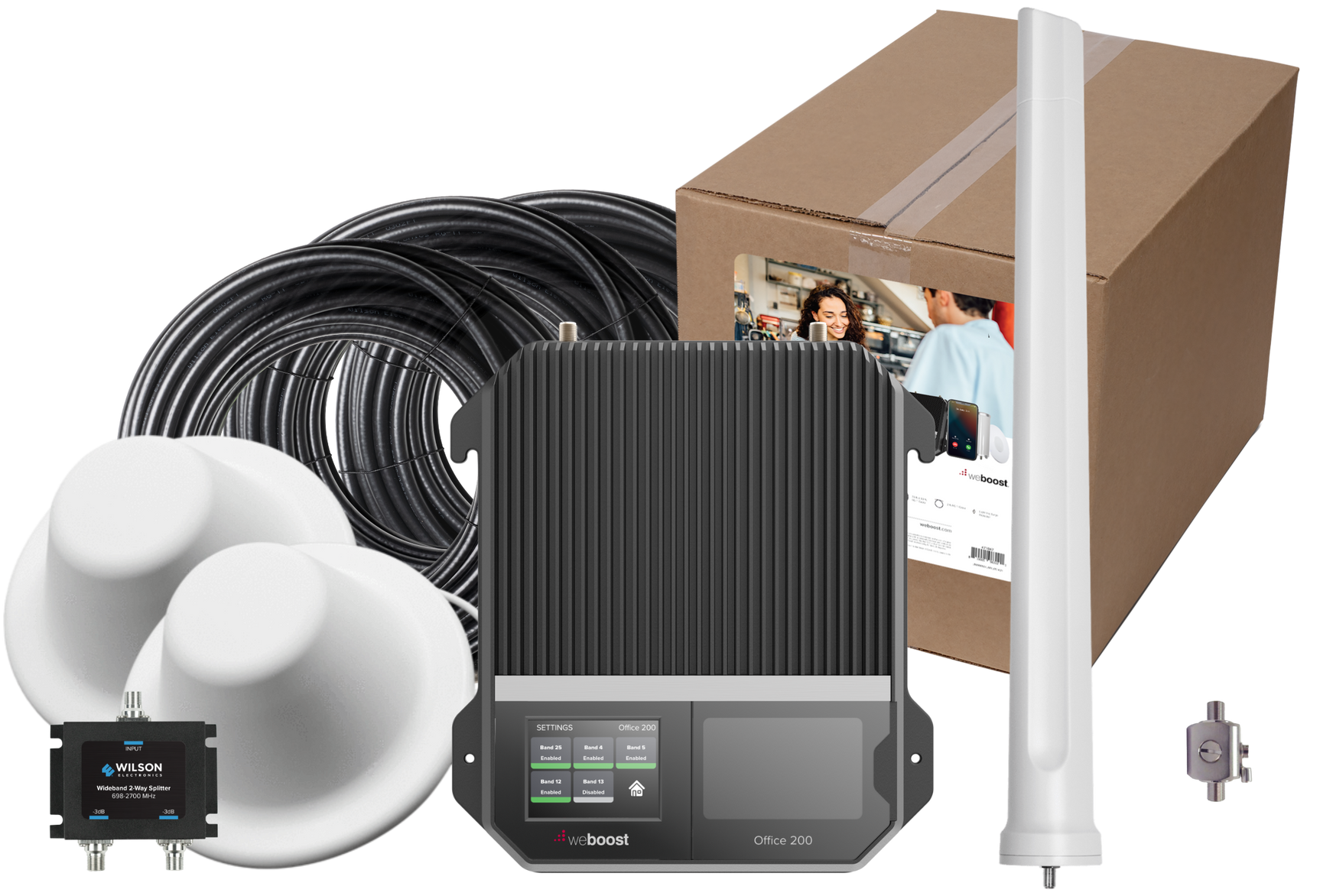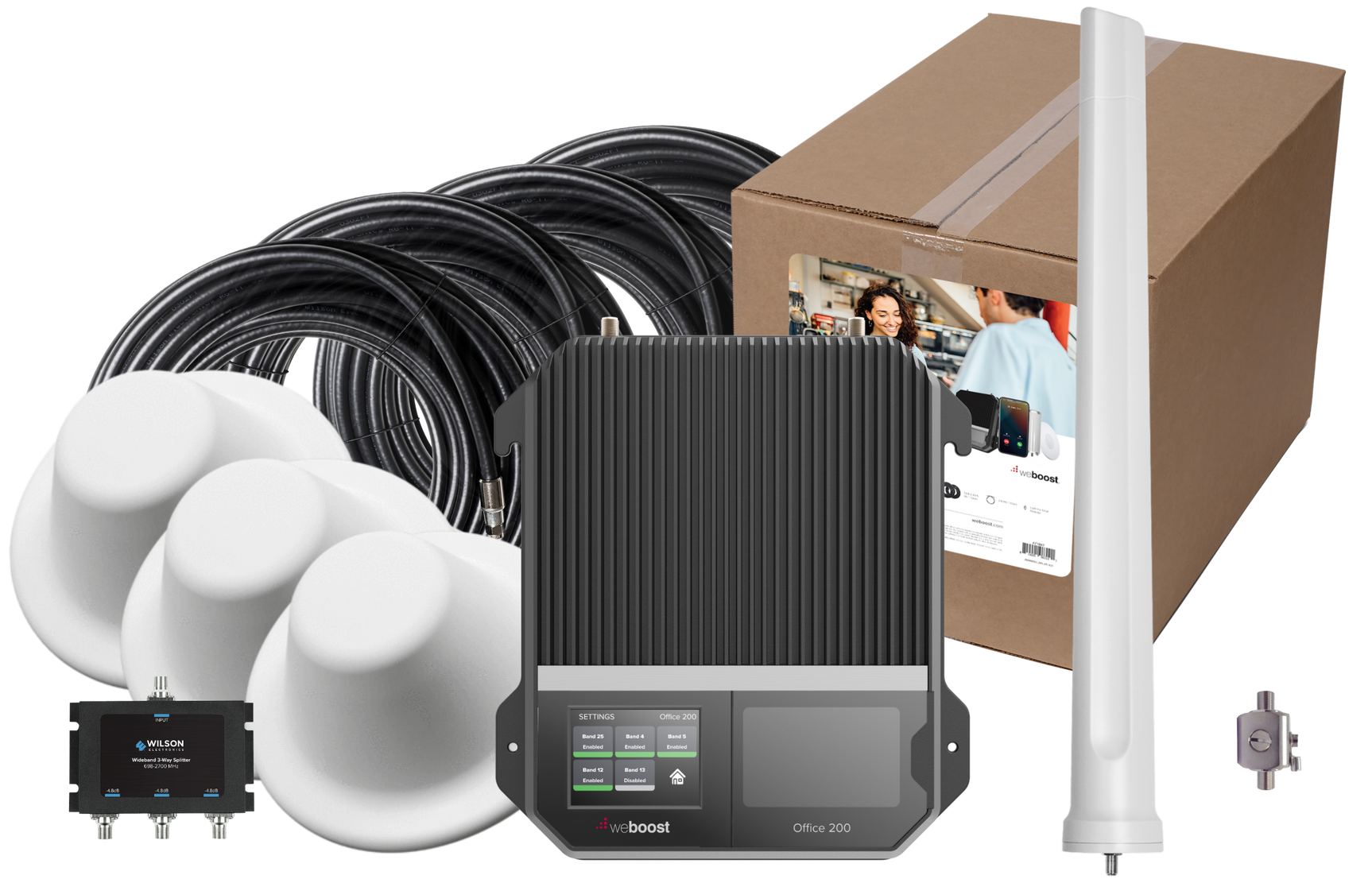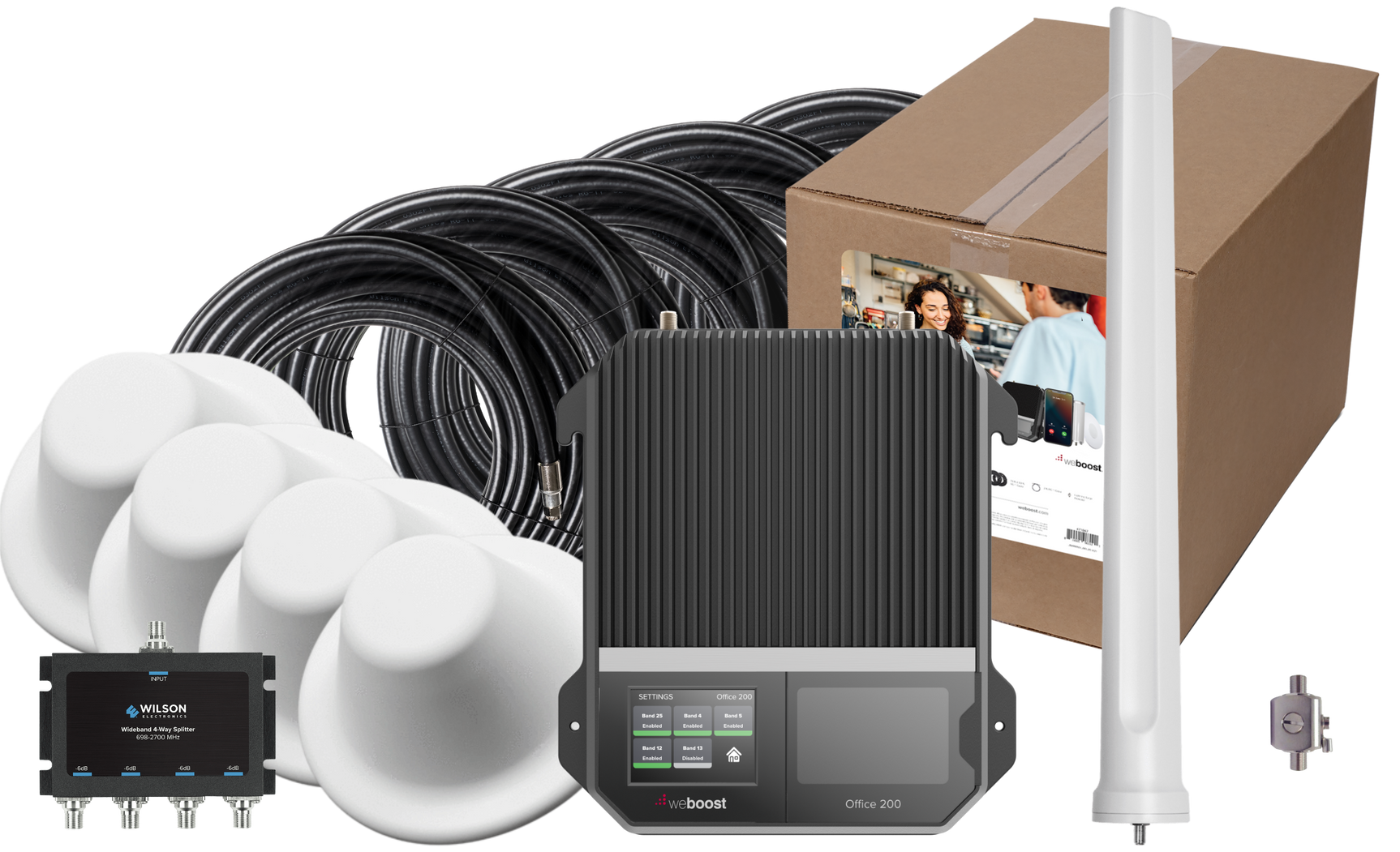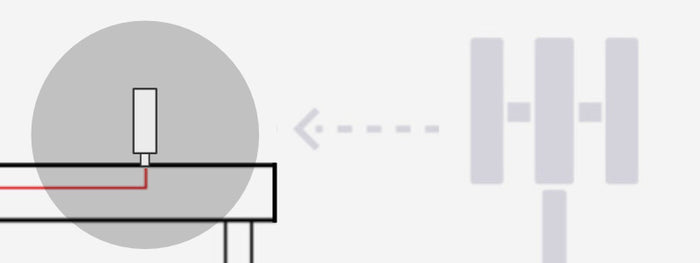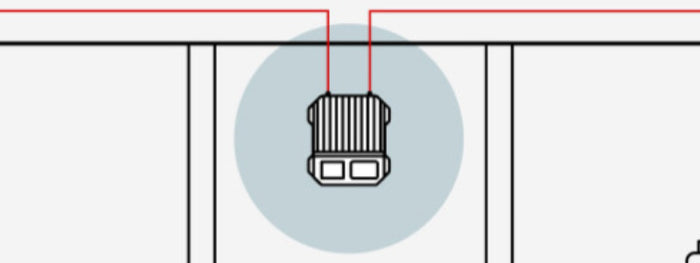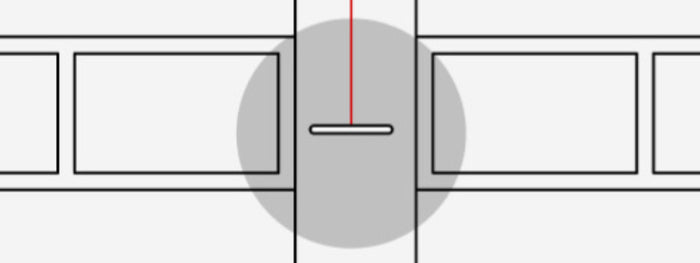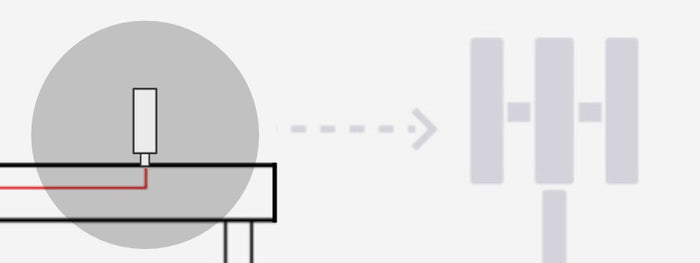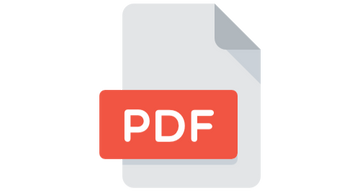weBoost Office 200 Signal Booster (75 Ohm) | 471047
90-Day Returns • Free Shipping $100+ • 3-Year Warranty
How to Choose the Right Antennas for Your Booster
Outside Antennas:
- Yagi Directional Antenna: This antenna is more powerful because it focuses on sending and receiving signals in one direction. It works best when there are no major obstacles blocking its path to the cell tower. It's not ideal for areas with large obstructions like hills or buildings.
- Omni Antenna: This antenna sends and receives in all directions, so it's better for hilly areas or if you need to support multiple carriers with towers in different directions. It doesn’t need to be aimed, but it also isn’t as strong as the Yagi antenna.
- High Gain LPDA Antenna: Perfect for areas with very weak signals, this antenna significantly boosts signal strength. It needs a clear line of sight to the cell tower and requires a sturdy mount because of its size.
- High Gain Omni Antenna: Similar to the standard omni, this antenna receives signal from all directions but delivers significantly higher gain across all supported bands. It’s a much stronger option when you want more inside coverage than a standard omni will provide, especially in areas with weaker outside signal.
Inside Antennas:
- Panel Antenna: Can be placed on walls or ceilings and directs the signal towards a specific area. This antenna is great for homes and tall ceilings in buildings.
- Standard Dome Antenna: Designed to be mounted on the ceiling, this antenna spreads the signal evenly throughout the area. It's best suited for drop ceilings or spaces where cables can be run above the ceiling.
- Ultra-Thin Dome Antenna: This slim antenna also mounts to the ceiling, but is much is less noticeable. It's much stronger than a standard dome antenna, making it a great choice for places where both looks and signal strength are important.
Tips for Choosing:
- Choose Omni Antennas for general coverage with no aiming required.
- Choose Directional Antennas (Yagi or LPDA) when you can point directly at a cell tower and need stronger signal and more inside coverage.
- Interior Size Considerations: One antenna per 750-1,500 sq ft in homes, or 1,500-2,500 sq ft in open spaces like offices and warehouses.
The weBoost Office 200 (model 471047) is our most powerful signal booster for homes and businesses. It boosts cell signal for multiple carriers and can be customized to fit both small and large spaces.
Even though it’s called the Office 200, this booster works just as well in homes. It’s a flexible system that can cover just a few rooms or several thousand square feet, depending on your needs and setup. It also includes a 3-year warranty and a lightning protector to help protect your investment.
We’ve made this version even better by offering upgraded antenna options. These allow for stronger boosting power and wider coverage, so you can build the right system for your space. You’ll find more details below to help you choose the best antenna setup.
If you need a strong, reliable signal throughout your home or office, the Office 200 is a great solution.
Please Note: This is a 75 Ohm system with F-connectors. Please see the weBoost Office 200 (50 Ohm) if you need a system with N-connectors.
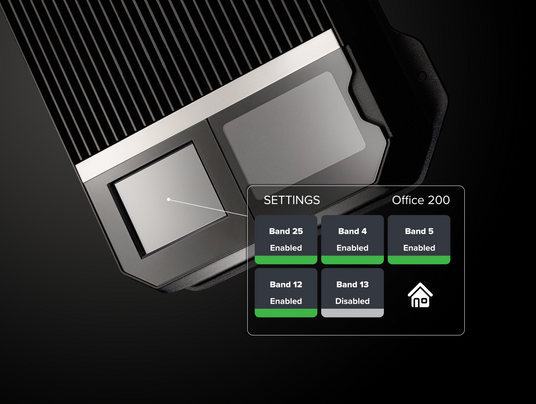
Benefits of the Office 200
- Powerful Coverage: Commercial-grade system with the strongest signal boosting allowed by the FCC for better coverage in large homes and businesses.
- Customizable Setup: Choose from multiple outside and inside antennas to create the best configuration for your space and signal conditions.
- Works with All Carriers: Supports all major U.S. and Canadian carriers at the same time, including Verizon, AT&T, and T-Mobile.
- Ready for the Future: Boosts 3G, 4G LTE, and 5G signals on all FCC-approved frequency bands, so you’re covered as networks evolve.
- Live System Monitoring: LCD screen on the amplifier shows real-time performance data to help with setup, optimization, and troubleshooting.
- Free System Design: Our team will design your system at no cost, including antenna recommendations, placement, cable runs, and a layout tailored to your space.

Where the weBoost Office 200 Works Best
- Offices and Workspaces: Fixes weak signal in small to mid-sized offices. Works in standalone buildings or offices attached to warehouses.
- Warehouses and Industrial Facilities: Brings signal indoors by routing around metal walls, open layouts, and heavy equipment. Great for warehouses, workshops, and fulfillment centers.
- Medical and Professional Offices: Supports reliable communication in clinics, labs, and medical offices for patient care, telehealth, and daily use.
- Hotels, Event Venues, and Conference Spaces: Provides strong signal for staff and guests in hotels, meeting rooms, and event spaces, including those used for trade shows and conferences.
- Retail Stores and Restaurants: Keeps signal stable for point-of-sale systems, staff communication, and customer service in stores and dining areas.
- Large Homes and Remote Properties: Covers multi-level homes, wide floor plans, and rural properties with poor outside signal, including basements and detached buildings.
How it Works
The weBoost Office 200 takes weak outdoor signal, amplifies it, and distributes it throughout your space to deliver strong and reliable coverage where you need it most. Here’s how the process works:
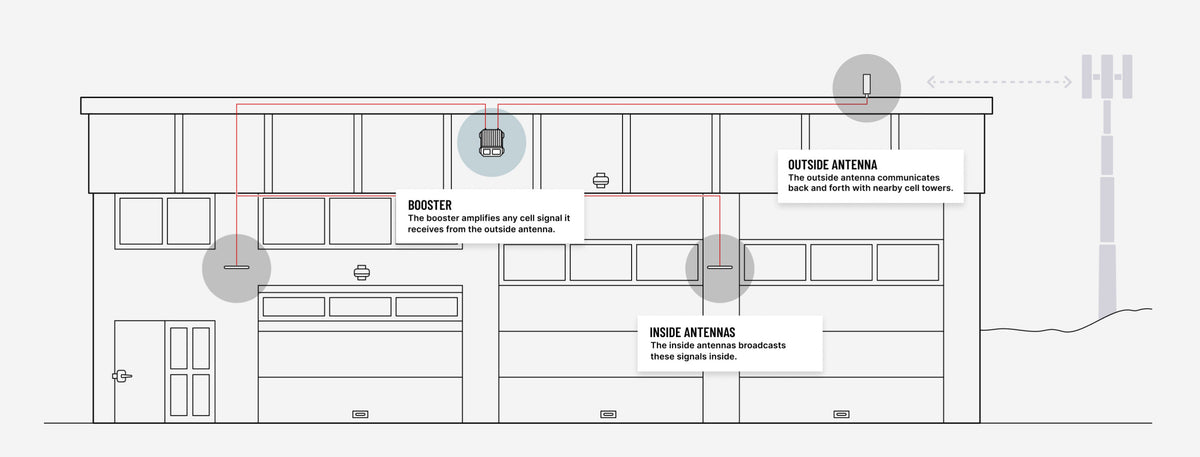
-
![]()
1. Outside Antenna Receives the Signal from the Cell Tower(s)
The outdoor antenna is mounted on your roof and receives the cell signal from the nearby towers. The antenna then passes that signal over a cable to the amplifier.
-
![]()
2. Amplifier Boosts the Weak Signal
The Office 200 amplifier, which is located inside the building, receives the signal and boosts it up to the maximum level allowed by the FCC before passing it on to the network of indoor antennas.
-
![]()
3. Inside Antenna(s) Broadcast the Strong Signal Inside
The inside antenna(s) receive the boosted signal from the amplifier and broadcasts it throughout the space. Multiple inside antennas can be used to provide more inside coverage.
-
![]()
4. Cell Signal is Boosted Back to the Tower
The system also works in reverse. When you make a call or use data, the signal is sent back through the system, gets boosted, and then sent back to the cell tower, ensuring strong signal in both directions.
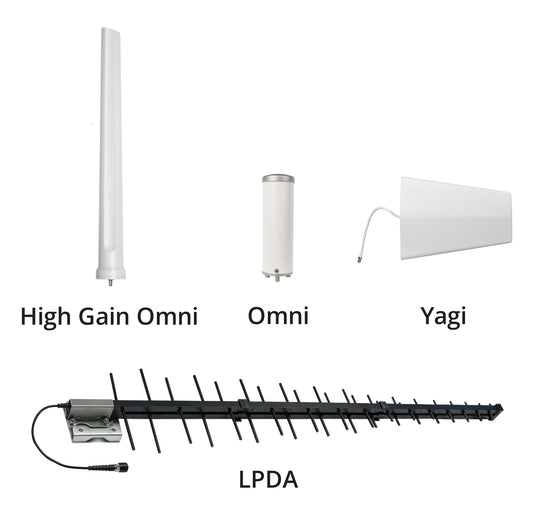
Outside Antenna Options
Picking the right outside antenna is one of the most important steps to getting the best performance from your booster. The antenna connects to the cell tower and brings in the signal, so the type you choose can have a big impact on your coverage inside.
- Omni Antenna: Best for areas with hills, mountains, or nearby buildings where the signal bounces around. It picks up signal in all directions with 4 dB of gain. It offers the smallest coverage area indoors but handles shifting or reflected signals better than the others.
- High Gain Omni Antenna: A stronger version of the standard omni, with up to 9 dB of gain depending on frequency. It still picks up signal in all directions but provides a much larger coverage area inside. Best when you want the simplicity of an omni but need more coverage.
- Yagi Directional Antenna: A good option when you have weak outside signal. It has up to 10 dB of gain and a 75-degree beam width, so it doesn't need to be aimed perfectly for it to work.
- High-Gain LPDA Antenna: Our most powerful antenna option with up to 13 dB of gain. It’s great for remote areas with very weak signal, but it needs a clear line of sight to the tower and must be aimed precisely for it to work.
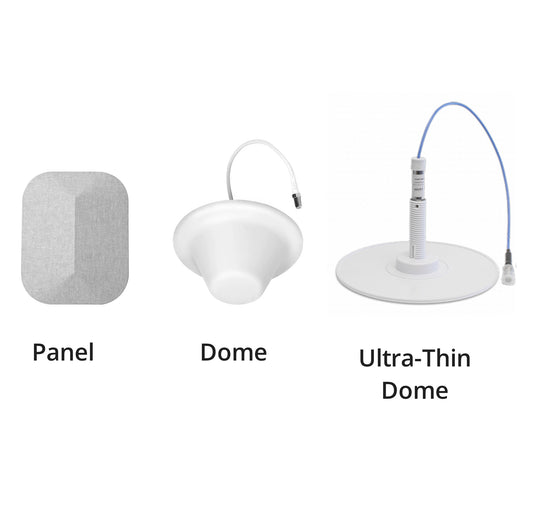
Inside Antenna Options
The type of ceilings and the layout of your building will help determine which inside antennas are best. Here’s a simple guide to help you choose the right type and number of antennas.
- Panel Antenna: A directional antenna that mounts to a wall, ceiling, or floor and sends signal in one direction. It offers higher gain (7 to 10 dBi) than dome antennas and works well in multi-story buildings, long narrow spaces, or rooms with high ceilings.
- Standard Dome Antenna: Mounts to the ceiling and broadcasts signal in all directions. It’s a good option for drop ceilings where cables can run above the tiles. With a gain of 2 to 5 dBi, it’s a solid and budget-friendly choice.
- Ultra-Thin Dome Antenna: A low-profile version of the standard dome. It blends in well with the ceiling and offers more power, with 4 to 6 dBi of gain. Like the standard dome, the cable needs to be routed above the ceiling.
How Many Inside Antennas Do You Need?
In most buildings with interior walls, one antenna typically covers 750 to 1,500 square feet. In large open spaces without walls, one antenna can cover 1,500 to 2,500 square feet. Use this as a general starting point to estimate how many antennas your space may need.
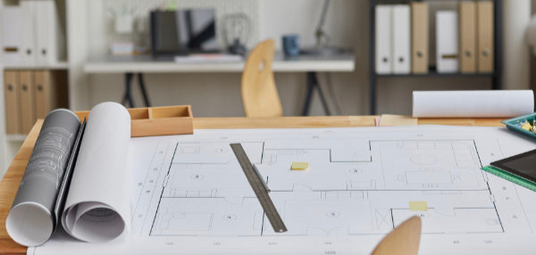
Not only do you get the equipment to start boosting cell signal, but you get an entire time of signal experts at your disposal to make sure that you have everything you need to be successful, including:
- Custom system design and RF modeling. Request that now.
- Priority tech support for optimizing and troubleshooting your new system
- Consultation pre-installation to avoid mistakes
- Access to support materials assembled by our experts on installation pre-planning, troubleshooting, tips and more.
In the Box
-

weBoost 200 Amplifier with Power Supply
-

Outside Antenna (Omni, Yagi, LPDA, High Gain Omni)
-

Inside Antenna (Panel, Dome, Slim Dome)
-

75 ft of RG-11 Cable for Outside Antenna Run
-

50 ft of RG-11 Cable - One for Each Inside Antenna
-

Lightning Protector
-

2 ft of RG-11 Cable
-

2, 3, or 4-Way Splitter for Multiple Inside Antennas
